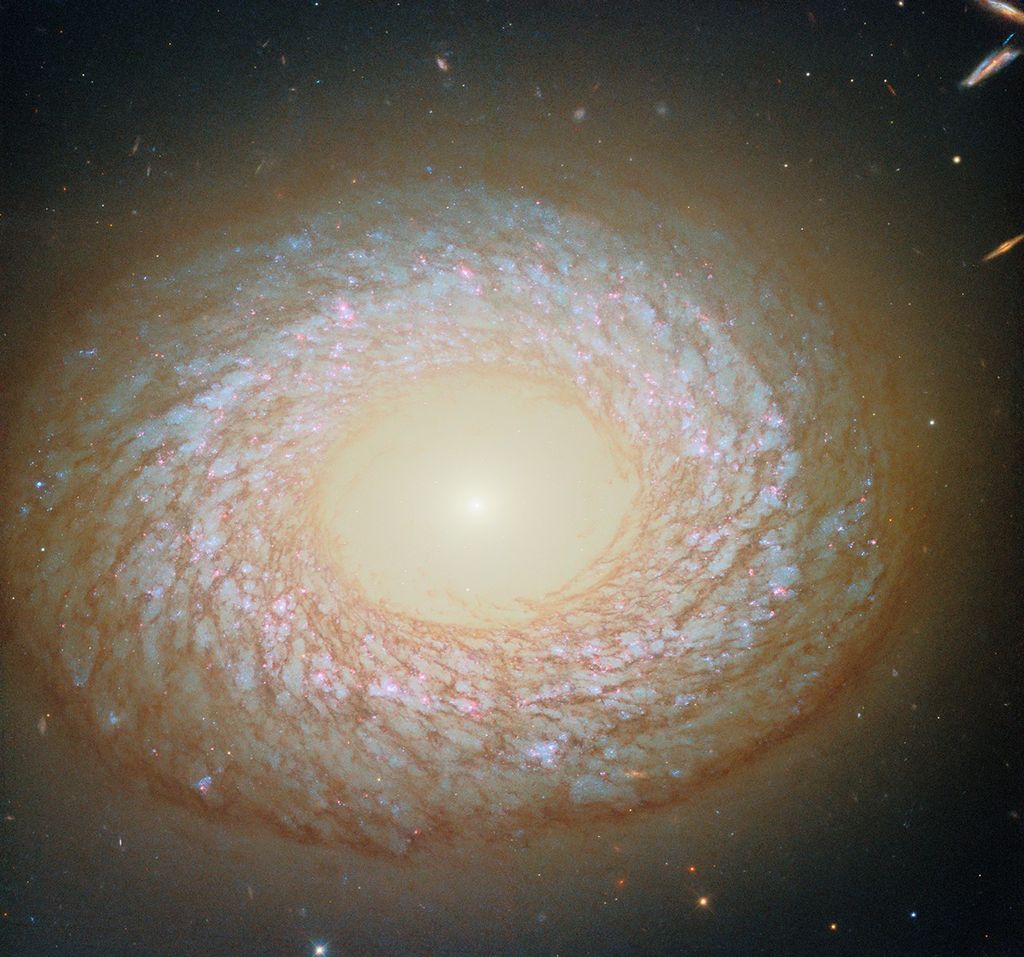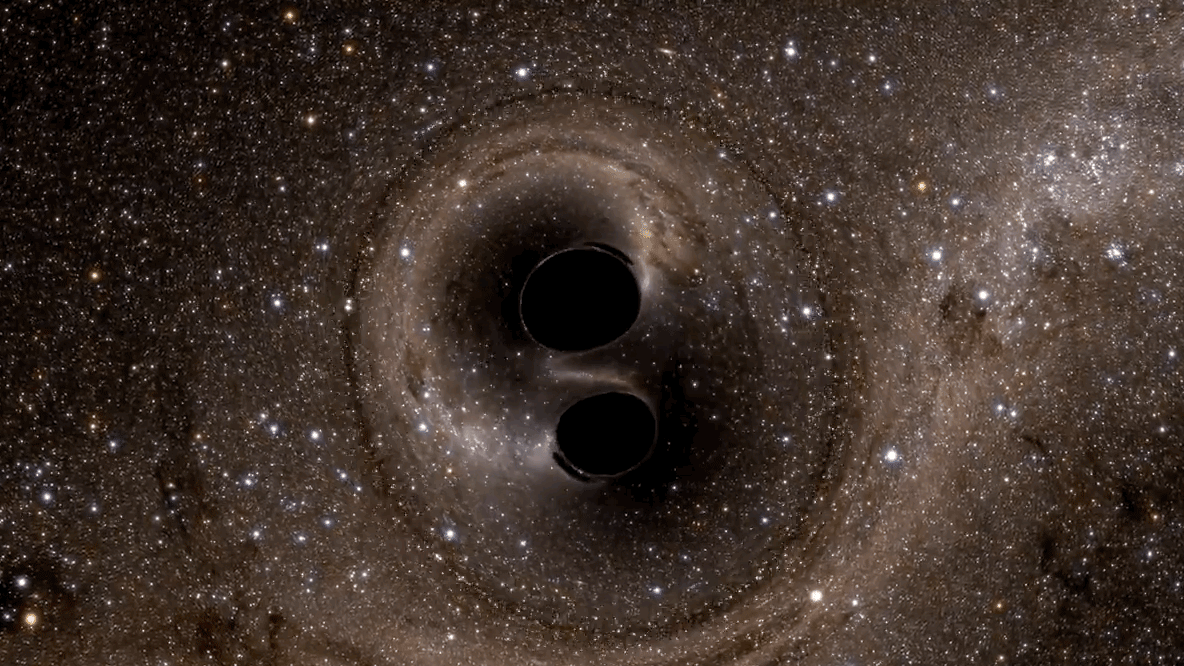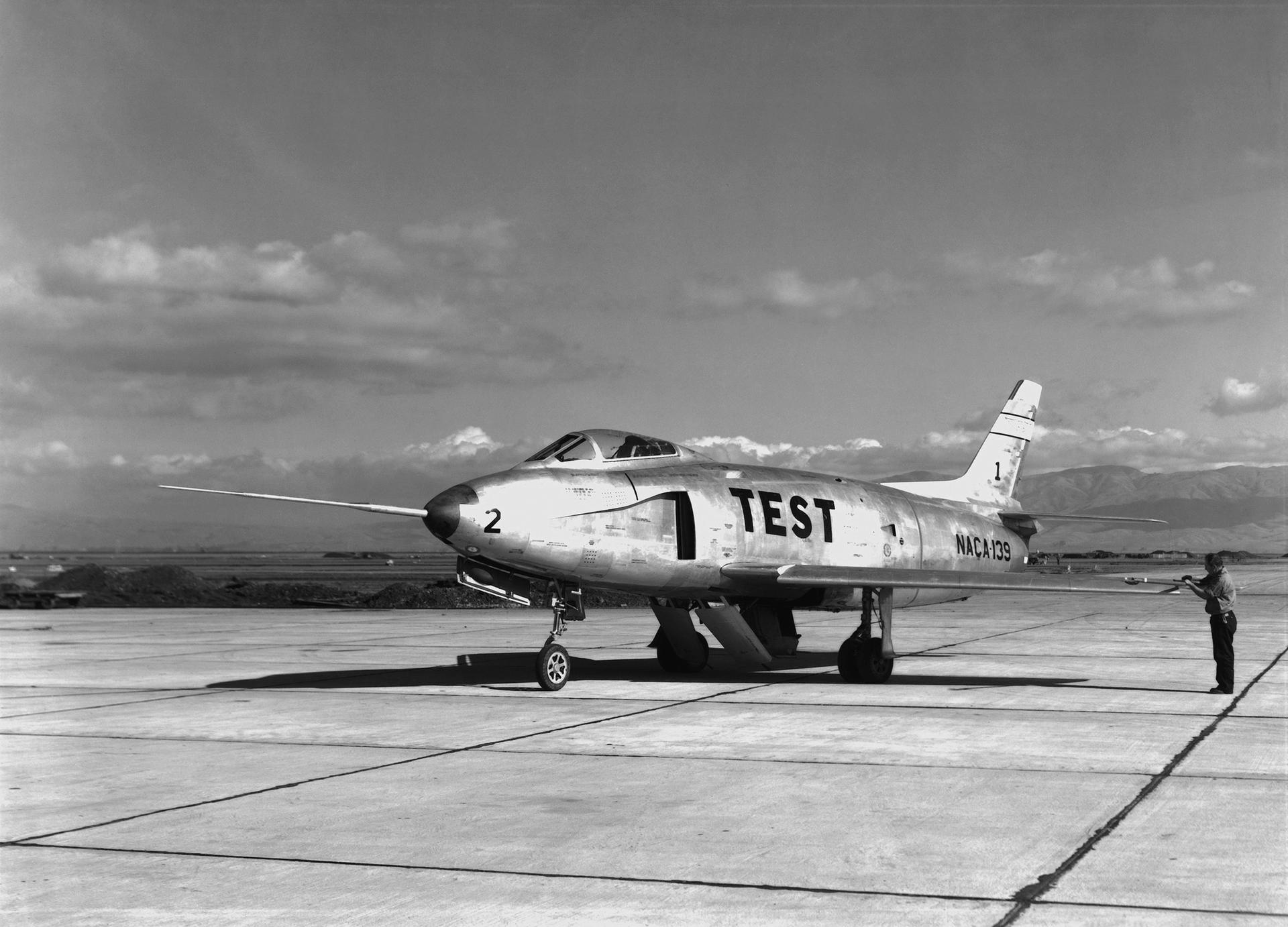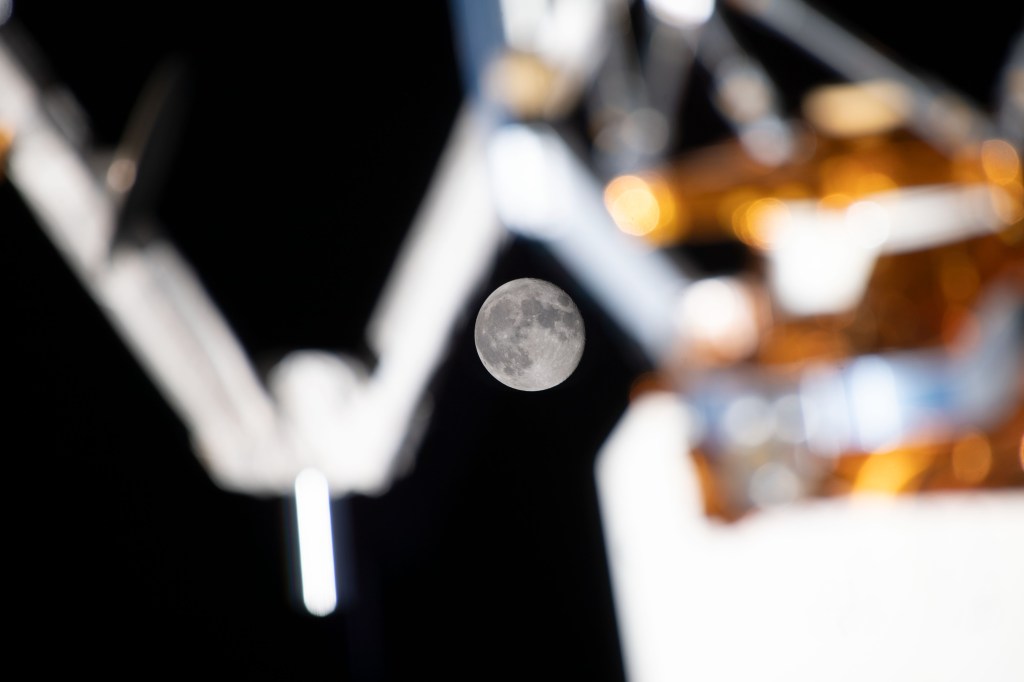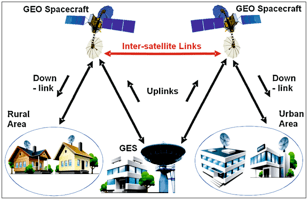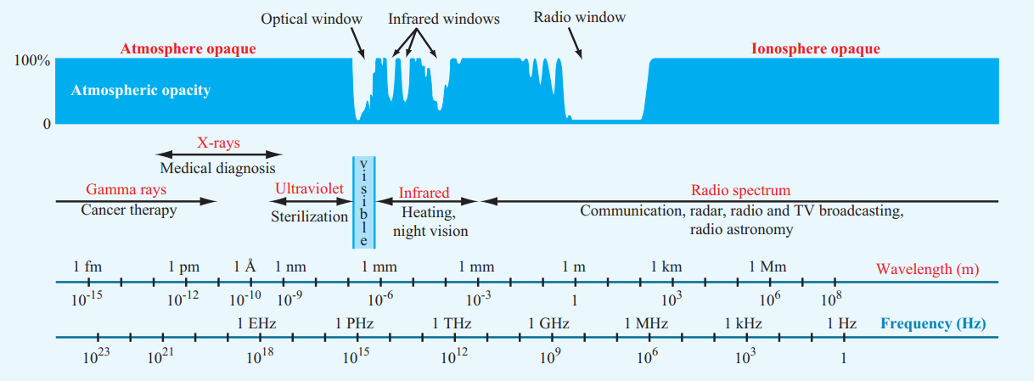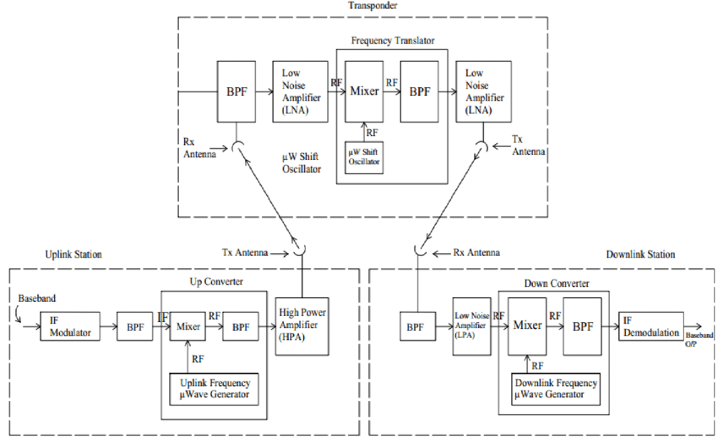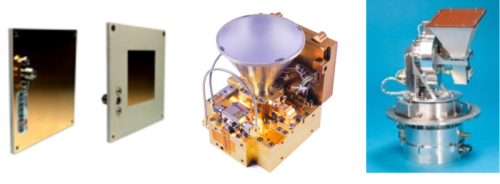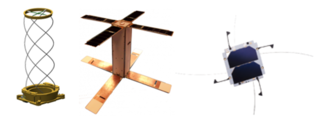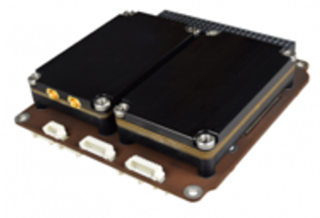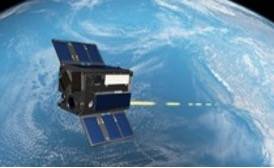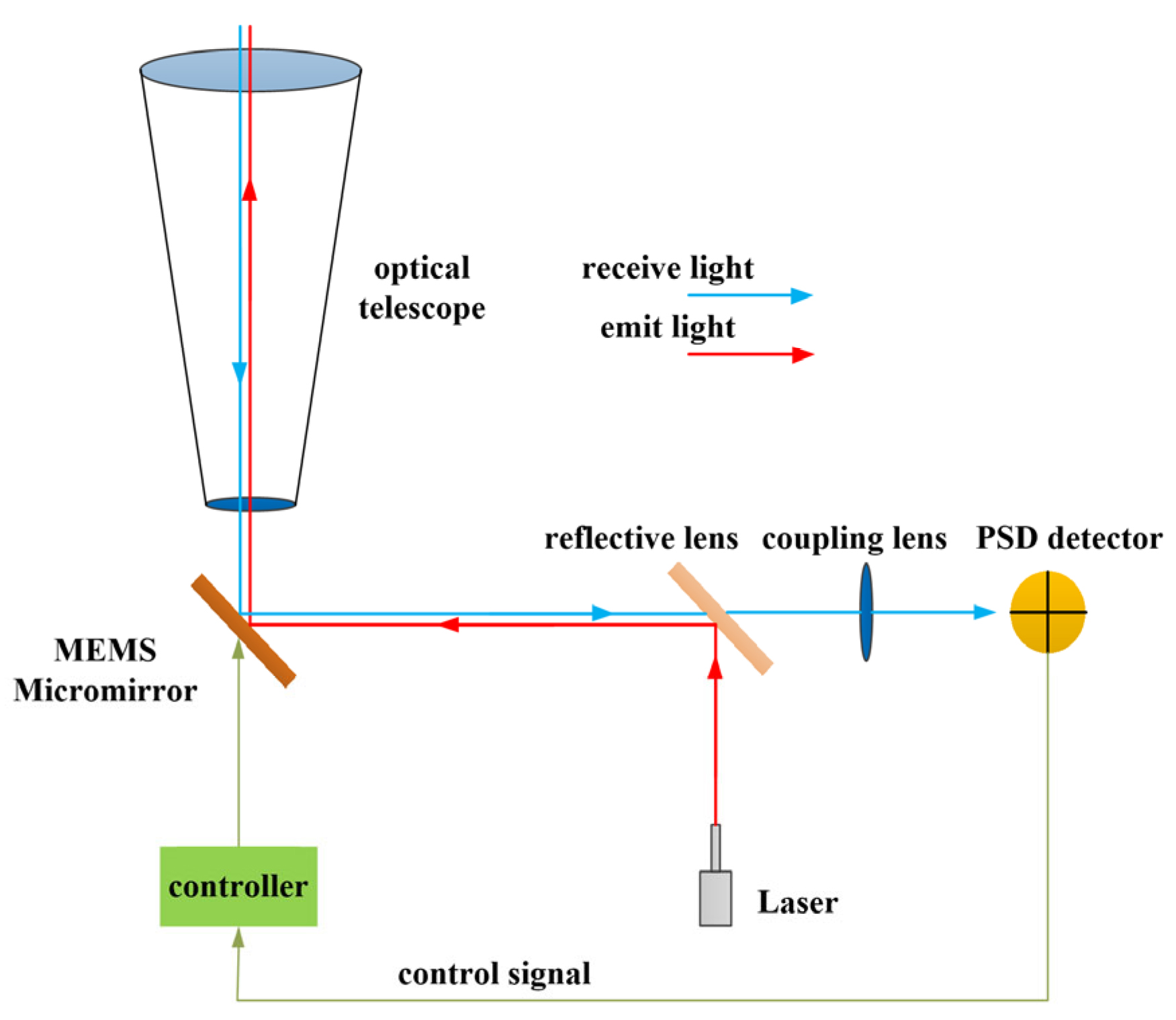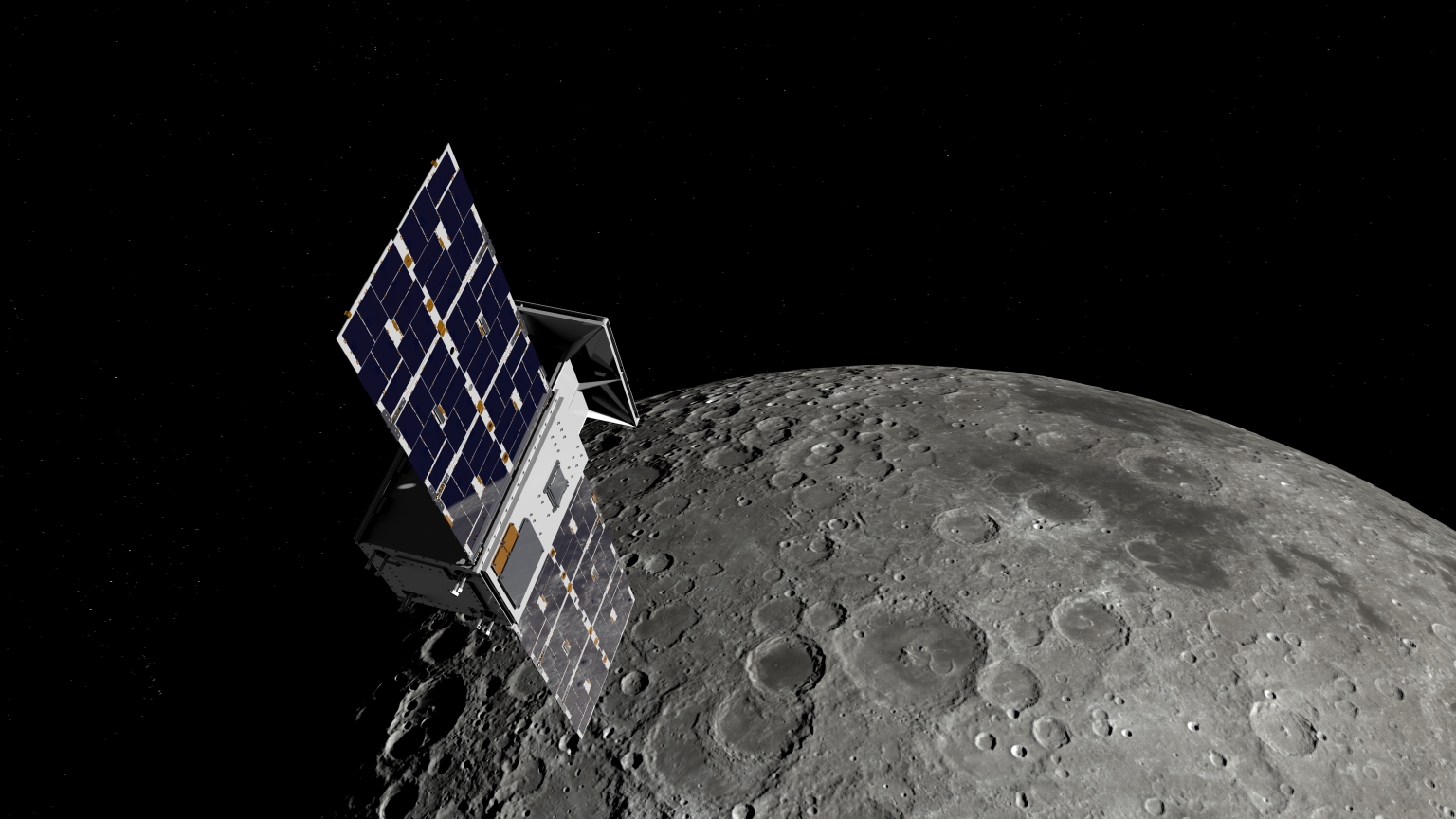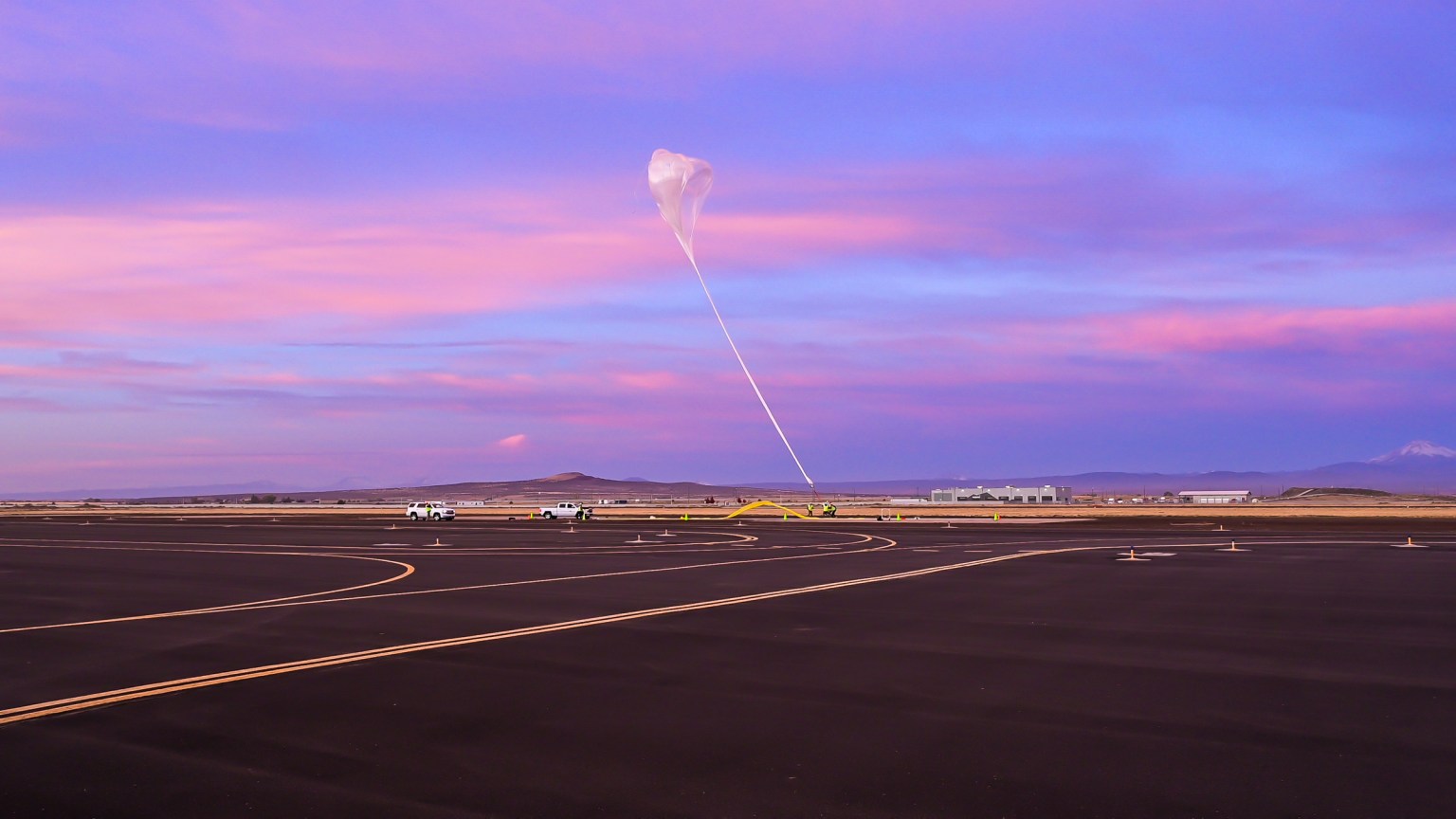Chapter Contents
- Chapter Glossary
- 9.1 Introduction
- 9.2 Radio Frequency Communications
- 9.3 Free Space Optical Communications
- 9.4 Future Technologies
- 9.5 Summary
- References
Chapter Glossary
| (ADCS) | Attitude Determination and Control System |
| (BPF) | BandPass Filters |
| (CDH) | Command and Data Handling |
| (COTS) | Commercial-off-the-Shelf |
| (DORA) | Deployable Optical Receiver Aperture |
| (DLR) | German Aerospace Center |
| (DSN) | Deep Space Network |
| (DSP) | Digital Signal Processing |
| (DVB-S2) | Digital Video Broadcast Satellite Second Generation |
| (FCC) | Federal Communications Commission |
| (FIPS) | Federal Information Processing Standard |
| (FPGAs) | Field Programmable Gate Arrays |
| (FSM) | Fine-steering Mirror |
| (FSO) | Free Space Optical |
| (IARU) | International Amateur Radio Union |
| (IEEE) | Institute of Electrical and Electronics Engineers |
| (ISARA) | Integrated Solar Array and Reflectarray Antenna |
| (ISM) | Industrial, Scientific, and Medical |
| (ISOC) | Inter-spacecraft Optical Communicator |
| (ISS) | International Space Station |
| (JAXA) | Japanese Aerospace Exploration Agency |
| (JPL) | Jet Propulsion Laboratory |
| (LADEE) | Lunar Atmosphere and Dust Environment Explorer |
| (Lasercom) | Laser Communications |
| (LCH) | Laser ClearingHouse |
| (LCT) | Laser Communication Terminals |
| (LDPC) | Low-Density Parity-check Code |
| (LLCD) | Lunar Laser Communications Demonstration |
| (LNA) | Low Noise Amplifier |
| (LSRB) | Laser Safety Review Board |
| (MA) | Multiple Access |
| (MarCO) | Mars Cube One |
| (MEMS) | Micro-Electro-Mechanical Systems |
| (MRR) | Modulating Retro-Reflector |
| (NEN) | Near Earth Network |
| (NICT) | National Institute of Information and Communications Technology |
| (NOAA) | National Oceanic and Atmospheric Administration |
| (NPR) | NASA Procedural Requirements |
| (NTIA) | National Telecommunications and Information Administration |
| (OCSD) | Optical Communication and Sensor Demonstration |
| (OCTL) | Optical Communication Telescope Laboratory |
| (OSIRIS) | Optical Space Infrared Downlink System |
| (PAT) | Pointing, Acquisition, and Tracking |
| (RF) | Radio Frequency |
| (SBIR) | Small Business Innovative Research |
| (SCaN) | Space Communications and Navigation |
| (SDR) | Software Defined Radios |
| (SME) | Subject Matter Expert |
| (SNR) | Signal-to-Noise Ratio |
| (SOTA) | Small Optical Transponder |
| (SWaP) | Size, Weight, and Power |
| (TDRS) | Tracking and Data Relay Satellite |
| (TMA) | Technology Maturity Assessments |
| (TRL) | Technology Readiness Levels |
| (TT&C) | Tracking, Telemetry & Command |
| (USTP) | University Smallsat Technology Partnerships |
| (VSOTA) | Very Small Optical Transponder |
| (WFF) | Wallops Flight Facility |
9.1 Introduction
For most missions the communication system enables the spacecraft to transmit data and telemetry to Earth, receive commands from Earth, and relay information from one spacecraft to another. A communications system consists of the ground segment: one or more ground stations located on Earth, and the space segment: one or more spacecraft and their respective communication payloads. The three functions of a communications system are receiving commands from Earth (uplink), transmitting data down to Earth (downlink) and transmitting or receiving information from another satellite (crosslink or inter-satellite link) (Figure 9.1). There are two types of communication systems: radio frequency (RF) and free space optical (FSO), FSO is also referred to as laser communications (lasercom).
Most spacecraft communications systems are radio frequency based. They typically operate within the designated Institute of Electrical and Electronics Engineers (IEEE) radio bands of 300 MHz to 40 GHz. A RF system communicates by sending data using electromagnetic waves to and from antennas. Information is modulated onto radio frequency electromagnetic waves and sent over a channel, through the atmosphere or space, to the receiving system where it is demodulated (Figure 9.2).
Although RF systems are typically used for low-rate space communication, recent developments in FSO communications have made it a compelling alternative to RF systems, particularly for high-rate communication. FSO systems consist of a transmitting terminal and receiving terminal. Like an RF system, information is modulated onto electromagnetic waves (at optical frequencies) and sent over a channel to the receiving system. FSO links operate at a much higher frequency than RF links, generally at near-infrared bands (e.g., 1064 nm or 1550 nm). Visible light is often not used due to eye safety concerns for technicians at the terminals. The use of higher frequencies and wider bandwidths can support higher data rates, but the shorter wavelengths also result in narrower beamwidths that require more accurate pointing towards the communication terminal both more accurately and precisely.
This chapter organizes the state-of-the-art in small spacecraft communications technologies into two main categories: RF and FSO. Tables at the end of each section list hardware options for RF and developing FSO technologies for mission designers to consider.
The information described below is not intended to be exhaustive but provides an overview of current state-of-the-art technologies and their development status for a particular small satellite subsystem. The list of organizations/companies in this chapter is not all-encompassing and does not constitute an endorsement from NASA. There is no intention of mentioning certain companies and omitting others based on their technologies or relationship with NASA. The information is for awareness and guidance only. The performance advertised may differ from actual performance since the information has not been independently verified by NASA subject matter experts and relies on information provided directly from the manufacturers or available public information. It should be noted that TRL designations may vary with changes specific to the payload, mission requirements, reliability considerations, and/or the environment in which performance was demonstrated. Readers are highly encouraged to reach out to companies for further information regarding the performance and TRL of the described technology.
9.2 Radio Frequency Communications
A radio communication system includes a radio transmitter, a free space communication channel, and a radio receiver. At the top level, a radio transmitter system consists of a data interface, modulator, power amplifier, and an antenna. The transmitter system uses the modulator to encode digital data onto a high frequency electromagnetic wave. The power amplifier then increases the output RF power of the transmitted signal to be sent through free space to the receiver using the transmit antenna.
The radio receiver system uses a receiving antenna, low noise amplifier, and demodulator to produce digital data output from the received signal. The receiving antenna collects the electromagnetic waves and routes the signal to the receiver, which then demodulates the wave and converts the electrical signals back into the original digital message. Low noise amplifiers are sometimes employed to minimize thermal noise in certain frequency bands and/or increase the received signal strength. In many cases, the functions of the modulator and demodulator are combined into a radio transceiver that can both send and receive RF signals.
Radio frequency communications for spacecraft are conducted between 30 MHz and 60 GHz. The lower frequency bands (up to S-band) are typically more mature for SmallSat use, however extensive use of these bands has led to crowding and challenges acquiring licensing. Higher frequencies offer a better ratio of gain-to-aperture-size, but this is offset by the increased atmospheric attenuation at those frequencies and the higher free space loss that is directly proportional to the square of the frequency.
9.2.1 Frequency Bands
Satellite communications are conducted over a wide range of frequency bands. The typical bands considered for small satellites are UHF, S, X, and Ka. The most mature bands used for CubeSat communication are VHF and UHF frequencies. There has been a shift in recent years towards S and X, with Ka-band also being used for recent & future small satellite communications. The move to higher frequency bands has been driven by a need for higher data rates. At the higher frequencies, there is generally greater atmospheric and rain attenuation adding to increased free space loss. This needs to be compensated for with higher power transmission and/or high gain antennas narrower beamwidths. Moving to higher-gain antennas increases the pointing accuracy required for closing the link. See Table 9-1 for a list of RF bands.
| Table 9-1: Radio Frequency Bands | |
|---|---|
| Band | Frequency |
| VHF | 30 to 300 MHz |
| UHF | 300 to 1000 MHz |
| L | 1 to 2 GHz |
| S | 2 to 4 GHz |
| C | 4 to 8 GHz |
| X | 8 to 12 GHz |
| Ku | 12 to 18 GHz |
| K | 18 to 27 GHz |
| Ka | 27 to 40 GHz |
| V | 40 to 75 GHz |
NASA spacecraft, which use the government bands of S-band, X-band and Ka-band, may use the NASA Near Space Network (NSN). The primary frequency bands of S, X, and Ka are more advantageous than using the UHF band, which has a higher probability of local interference. Satellite Tracking, Telemetry & Command (TT&C) is typically conducted over S-band. Non-NASA spacecraft have access to a wide variety of ground system options ranging from do-it-yourself to pay-per-pass services.
In L-band, CubeSats can take advantage of legacy communications networks such as Globalstar and Iridium by using network-specific transponders to relay information to and from Earth. These networks remove dependence on dedicated ground station equipment. However, they can only be used at orbital altitudes below the communication constellation and require experimental frequency authorization.
Ku-, K-, and Ka-band communication systems are the state-of-the-art for large spacecraft, especially in spacecraft-to-spacecraft communications, but they are still young technologies in the CubeSat world. They are becoming more attractive to SmallSat designers as the lower frequencies become more congested. At the higher frequencies, rain fade becomes a significant problem for communications between a spacecraft and Earth (1). Nonetheless, the benefits of operating at higher frequencies have justified further research by both industry and government alike. At JPL, the Integrated Solar Array and Reflectarray Antenna (ISARA) mission demonstrated high bandwidth Ka-band CubeSat communications with over 100 Mbps downlink rate (2). The back of the 3U CubeSat was fitted with a high gain reflectarray antenna integrated into an existing solar array. The successful demonstration of the reflectarray on ISARA became the basis for the Mars Cube One (MarCO) mission to Mars. The MarCO mission uses two twin CubeSats for a communications relay between the InSight lander and Earth. Using a X-band reflectarray they were able to successfully complete their mission (3). Another mission to use Ka-band for DTE communications was the Kepler telescope, launched in 2009. With future missions being increasingly data hungry, we are likely to see a shift towards Ka-band and, possibly, even higher frequencies.
CubeSats have also used the unlicensed Industrial, Scientific, and Medical (ISM) bands for communications. The Ames TechEdSat team has successfully demonstrated WiFi to downlink data at 1 Mbps. Notably, a group at Singapore’s Nanyang Technological University used a 2.4 GHz ZigBee radio on its VELOX-I mission to demonstrate commercial-off-the-shelf (COTS) land-based wireless systems for inter-satellite communication (4). Similarly, current investigations are looking at using wireless COTS products, such as Bluetooth-compatible hardware, for inter-satellite communications (5).
9.2.2 System Architecture
A small satellite RF communications system consists of a transceiver comprised of a radio, an amplifier, and an antenna. Radios receive a message from the Command and Data Handling (CDH) subsystem, then produce and modulate an electromagnetic wave to create a signal. They are responsible for generating the signal and modulating or demodulating it. The radio is also where coding may be added to the signal. Channel coding is added to provide data error detection and correction capabilities, which ensures reliable communication under the conditions imposed by the satellite transmission path. From Shannon’s Equation (6), it is known that the information capacity of a channel is related to its bandwidth and signal-to-noise ratio (SNR). The channel capacity (information flow) can be increased by increasing the SNR or the bandwidth, and many modulation and coding schemes make effective use of this tradeoff.
Radios offer some power amplification, but often the signals from small satellites require a greater boost. The power amplifier will take the signal from the radio and increase the RF output power before sending it to the transmit antenna. On the receive side, a low noise amplifier will take the weak signal from the receive antenna and amplify it while minimizing thermal noise. A bandpass filter might be used before the LNA to reject undesired frequencies. The radio will then be able to process the stronger signal with higher accuracy. In RF communications the role of the antenna is to increase and focus the strength of the signal in a specific direction. The digital message encoded on the RF carrier signal will be sent to and from the antennas of each system. See Figure 9.3 for an example transmit and receive block diagram.
9.2.3 Major Components in SmallSat Communication Systems
- Radio or Modulator/Demodulator: on the transmit side it produces, modulates, codes, and amplifies an electromagnetic wave to create a signal. Adds modulation and coding as needed. As a receiver it decodes and demodulates received signals.
- Mixers: RF mixers are used in communications systems to change the frequency of the signal. If the frequency generated by the radio is not the desired transmit frequency, then an upconverter will convert the signal to a higher frequency for transmit. Similarly, the downconverter will down convert a receive frequency to a lower one for processing.
- Filters: bandpass filters are used to reject undesired frequencies, typically before the LNA or downconverter.
- Amplifier: a power or gain amplifier is required for a transmit system. A low noise amplifier (LNA) is required for a receive system. LNAs, in addition to amplifying the (low power) received signal, serve to minimize the system noise temperature.
- Antenna: increases the strength of a signal in a specific direction, relative to the same signal strength without directionality. Transmits signals fed to it by a transmitter and receives signals propagated across free space. Antennas can be low-gain & omni-directional with a broad beam, or high-gain & directional with a narrow beam.
- Encryption: a cryptographic unit is an integrated encryptor/decryptor device that provides secure uplink, downlink, or crosslink for satellite communication links. Most small satellite designers will not require a cryptographic payload unit based on their threat level and may be able to use the communications radio for simple encryption schemes.
- Spread-spectrum communication applies a known frequency spreading function to the signal, which helps reduce interference from other transmitters, and provides more secure communications; as such, it is often used for multi-way communication networks. For example, the NASA Tracking and Data Relay Satellite (TDRS) multiple-access mode requires spread spectrum signals to support multiple simultaneous communication links.
9.2.4 Design Considerations
As with all spacecraft subsystems, there are power and mass constraints placed on the comm system. Based on these restrictions several trade studies need to be performed to choose the optimal design. When designing an RF communications system, the first trades performed are for data rate, power consumption, and total mass. For example, a mission with high data rate needs would select a high frequency such as X-band for downlink and a directional high-gain antenna. Based on the ground station locations available, engineers would perform link budget analyses to determine the minimum power needed for a specific ground station antenna. This analysis would factor in rain and atmospheric attenuation, as well as modulation and coding. A few different link budget trades will be run, varying antenna size, RF output power and data rate. Each link will return a different margin of decibels, representing the reliability of the system. The engineers will proceed to calculate the final mass and power for each configuration. The mission designer will have a limit on mass and power constraints for the communications subsystem. Each configuration traded will compare data rate, power, and mass. A high data rate downlink may cost a high amount of mass for the antenna and power for the amplifier and radio. Conversely, a low-power, low-mass system may have a lower data rate.
Another factor that is considered in the design phase is pointing. Depending on the orbit of the satellite and whether the link is Uplink/Downlink, or Crosslink, the system may have a specific pointing requirement. Large satellites frequently use gimbals–platforms that can pivot to point their antennas. The addition of a gimbal will increase the overall mass and power draws of the system. CubeSats frequently trade high-gain antennas for low-gain, omni-directional ones to maintain the link regardless of directionality. CubeSats may also change their attitude to point a body-mounted antenna, rather than use a gimbal.
9.2.5 Policies and Licensing
Any non-Federal US spacecraft with a transmitter must be licensed by the Federal Communications Commission (FCC). The types of RF licenses used by small satellites are: Amateur (FCC Part 97) and Experimental (FCC Part 5) (7). An amateur license type of authorization is limited to hobbyists and non-profit use and comes with many FCC restrictions. Experimental Part 5 licenses are commonly used for university CubeSats and can be granted for a CubeSat operating in the amateur band (A SmallSat or SmallSat constellation can also apply under provisions of Part 25). A spacecraft with any sort of remote sensing capability must contact the National Oceanic and Atmospheric Administration (NOAA) to find out if a NOAA license is required. A NOAA license is not an RF license and conveys no authority for the radiation of RF energy for communication. For government missions the National Telecommunications and Information Administration (NTIA) is the licensing authority.
For amateur licensing, there must be an FCC licensed amateur radio control operator. Downlink telemetry and communications cannot be obscured (encrypted). Use of science gathered via amateur radio downlink for profit (“pecuniary interest”) is prohibited. Frequency “assignment” in the amateur-satellite allocations requires coordination, a process administered by the International Amateur Radio Union (IARU) (8). In 2018, the FCC adopted a Notice of Proposed Rulemaking to develop a new authorization process tailored specifically to small satellite operations, keeping in mind efficient use of spectrum and mitigation of orbital debris. Small satellites that would qualify for the new rules include those with 10 or lesser number of satellites under a single license. All individual satellites will have to be 10 cm or larger in the smallest dimension and weigh less than 180 kg. The maximum in-orbit lifetime of each individual satellite will be six years, including de-orbiting time, and they would have to be deployed under 600 km altitude. Each satellite will have a unique telemetry marker for tracking and will not release any debris (9).
9.2.6 Encryption
Encryption is the process of encoding information to conceal it from outside actors. Small satellites can use a cryptographic unit to encrypt or decrypt data prior to transmission. When data is being prepared for transmission, it is broken up into packets. These packets are then scrambled according to the encryption scheme being used. An encryption scheme uses an encryption key generated by an algorithm to encode the data. The authorized receiver of the encrypted data will be able to decrypt the message using the appropriate key. Without the authorized key, decrypting the data will be extremely difficult.
With the increased proliferation of small satellites in low-Earth orbit comes an increase in vulnerabilities. Many SmallSats are comprised of COTS hardware and/or open-source software. While this strategy allows for a more flexible design approach, adversaries can gain insight into the design. Encryption of data in transit prevents other actors from commanding satellites or intercepting transmissions.
NASA requires any of its propulsive spacecraft within 2 million kilometers of Earth to protect their command uplink with encryption that is compliant with Level 1 of the Federal Information Processing Standard (FIPS) 140-3 (10). The FCC has also considered requiring encryption on the telemetry, tracking, and command communications as well as mission data for propulsive spacecraft, but decided not to incorporate a specific requirement at this time. A satellite with an amateur license cannot encrypt transmissions in any way and must consist of open information. The eligibility rules are listed in 47 CFR Part 97 (11).
9.2.7 Antennas
Antennas are used for propagating data through free space using electromagnetic waves. RF antennas are typically sized for their respective frequencies. This means that antennas are often chosen or designed specifically for their mission. COTS antennas are available for SmallSats and can be built to order. For missions that don’t have high data rate requirements, a simple patch or monopole antenna with low gain and efficiency will suffice. Due to their low directionality, these antennas can generally maintain a communication link even when the spacecraft is tumbling, which is advantageous for CubeSats lacking good attitude and accurate pointing control. New developments in antenna design have put technologies like the deployable reflector antenna, reflectarray, and passive or active array antennas on the horizon for small satellites. Please see Table 9-2 for information on commercially available antennas for SmallSats/CubeSats.
There are two primary classifications of antenna: fixed or deployable. Fixed antennas do not require any power or triggering mechanisms. They remain stationary in the position that they are attached to the spacecraft. This includes patch antennas, array antennas, monopole antennas, omni-directional antennas, and horn antennas (see Figure 9.4). Deployable antennas require power to deploy and use mechanisms to configure into their final position. This includes whip antennas, parabolic reflectors, reflectarrays, helical and turnstile antennas (see Figure 9.5).
A communications link is often characterized by the frequency and data rate. The antenna is a key design decision for meeting data rate objectives by increasing link margin. Increasing the aperture or diameter of an antenna increases the link margin, which can allow designers to increase the data rate of the system or reduce the necessary transmit power.
9.2.8 Radios
Radios for SmallSat downlink are transceivers (transmitter and receiver in one). Transceivers convert digital information into an analog RF signal using a variety of modulation and coding schemes. Radios for TT&C are designed for low data rates, with high reliability and only need to transmit health data and receive commands. Traditional radios may be locked to a single frequency band and modulation/coding scheme based on their design and build. Software defined radios (SDR) have some or all of the radio’s functions implemented in Digital Signal Processing (DSP) software rather than hardware, Figure 9.6. Furthermore, spacecraft teams can change such characteristics in-flight by uploading new settings from the ground. By using Field Programmable Gate Arrays (FPGAs), SDRs have great flexibility that allows them to be used with multiple bands, filtering, adaptive modulation, and coding schemes, without much (if any) change to hardware (12). SDRs are especially attractive for use on CubeSats, as they are becoming increasingly small and efficient as electronics become smaller and require less power. NASA has been operating the Space Communications and Navigation (SCaN) Testbed on the International Space Station since 2012 for the purpose of SDR TRL advancement, among other things (13). Many radios can provide RF output power to the antenna directly. For higher power applications, an external RF amplifier or high gain antenna may be used. The reader is encouraged to refer to the SmallSat Avionics chapter for further information on FPGAs and SDRs. See Table 9-3 for information on commercially available radios for SmallSat/CubeSats.
This report recommends efficient modulation and coding schemes for spacecraft power and bandwidth to increase the data rate and meet bandwidth constraints with the limited power and mass for CubeSat spacecraft. Advanced coding, such as the CCSDS low-density parity-check code (LDPC) family, with various code rates is a powerful technique to provide bandwidth and power with high-order modulation to achieve high data rate requirements for CubeSat missions. Digital Video Broadcast Satellite Second Generation (DVB-S2), a significant satellite communications standard, is a family of modulations and codes for maximizing data rates and minimizing bandwidth use. DVB-S2 uses power and bandwidth efficient modulation and coding techniques to deliver performance approaching theoretical limits of RF channels. NASA’s NSN has conducted testing at NASA Wallops Flight Facility (WFF) to successfully demonstrate DVB-S2 over a S-band 5 MHz channel achieving 15 Mbps with 16 APSK LDPC 9/10 code (14).
9.2.9 On the Horizon RF Communications
A CubeSat constellation may involve numerous CubeSats in the constellation (e.g., tens or hundreds). Each CubeSat is typically identical from a communication perspective. One or more CubeSats may be mother ship-capable while the others may be subordinate (e.g., daughterships). CubeSat constellations optimize coverage over specific areas or improve global revisit times to fulfill mission objectives. There is growing interest among the NASA science community in using constellations of CubeSats to enhance observations for Earth and space science. NASA GSFC has conducted research on future CubeSat constellations, including CubeSat swarms, daughter ship/mother ship constellations, NEN S- and X-band direct-to-ground links, TDRS Multiple Access (MA)arrays, and Single Access modes. The MA array requires the use of spread-spectrum to support multiple simultaneous communications links to increase coverage and link availability.
As CubeSat missions employ more automation, constellations could exchange information to maintain precise positions without input from the ground. Radiometric ranging is a function recently incorporated into CubeSat transceivers. A timing signal is embedded into the radio signal and is used to determine the range to the spacecraft. Using this method along with directional vectors obtained from ground antennas allows for trajectory determination of satellites beyond low-Earth orbit. Spacecraft may relay data to increase the coverage from limited ground stations. Inter-CubeSat transponders may very well become a vital element of eventual deep space missions, since CubeSats are typically limited in broadcasting power due to their small size, and may be better suited to relay information to Earth via a larger, more powerful mothership.
Spacecraft routinely use transponders, however, networked swarms of CubeSats that pass information to each other and then eventually to ground, have not flown. Developing networked swarms is less of a hardware engineering problem than a systems and software engineering problem in that one must manage multiple dynamic communication links. As of 2024, the two MarCO SmallSats, CAPSTONE, BioSentinel, ArgoMoon, LunaH-Map, have operated beyond low-Earth orbit and both use the IRIS CubeSat Deep Space transponder[JS1] . Both the MarCO satellites used a deployable reflectarray panel at X-band and were equipped with a full-duplex radio providing both UHF and X-band coverage (15). This allowed for near real-time updates of the InSight rover’s landing. After this success, more SmallSats may be deployed beyond low-Earth orbit. The ability to provide crosslink relay hops for large spacecraft will prove to be critical for deep space missions.
| Table 9-2: Antennas | ||||||||||||
|---|---|---|---|---|---|---|---|---|---|---|---|---|
| Manufacturer | Product | Type | Min Frequency | Frequency Band | Gain | Polarization | Mass | Dimensions | Flight Heritage | |||
| — | — | — | [MHz] | — | [dBi] | — | [g] | [cm] | — | |||
| MMA Design | LAMBDA | Deployable Sinuous Antenna | 100 | UHF | >-1 | Dual CP | 4000 | 20x15x10 (stowed) 100×100 (deployed) | N | |||
| Oxford Space Systems | Yagi antenna | Deployable | 156.5-162.5 | VHF | >6.5 | Dual Linear | <1000 | 92.5 x 50 (deployed) | Y | |||
| Spacemanic | SAM_Antenna_Module | Dipole Cross Dipole | 144 399 420 | VHF, UHF | 2.1 | Linear/RHCP | 55 | 9.8X9.8X0.56 | Y | |||
| Haigh-Farr, Inc. | Part Number: 17100 | Crossed Dipole | 307 | VHF, UHF | — | RHCP | 267 | 32x8x1 | Y | |||
| GomSpace | NanoCom ANT430 | Omni Canted Turnstile | 400-435 | VHF, UHF | 1.5 | Circular | 30 | 10×10 | Y | |||
| Helical Communications Technologies | Helios Deployable Antenna | Helical | 400-3000 | VHF, S | 3 | Circular | 180 | 10x10x3.5 | Y | |||
| NanoAvionics | CubeSat UHF Antenna System 1x1U | Turnstile | 400-500 | UHF | 1.37 | — | 33 | 10x10x0.7 | Y | |||
| NanoAvionics | CubeSat UHF Antenna System 1x2U | Turnstile | 400-500 | UHF | 2.31 | — | 50 | 20x10x0.7 | Y | |||
| NanoAvionics | CubeSat UHF Antenna System 2x2U | Turnstile | 400-500 | UHF | 3.4 | — | 65 | 20x20x0.7 | Y | |||
| EnduroSat | UHF Antenna III | Whip/Burn-wire | 435-438 or 400-403 | UHF (VHF option) | > 0 | RHCP | 85 | 10×10 | Y | |||
| ISISPACE | CubeSat Antenna System for 1U/3U | Tape | — | VHF, UHF | 0 | Circular, Linear | 89 | 10x10x0.7 | Y | |||
| Flexitech Aerospace | 600MHz – 10GHz Spiral Antenna | Spiral | 600-10000 | UHF, L, S, C, X | 3 | Circular | 1283 | 17x17x8.5 | N | |||
| Oxford Space Systems | Helical antenna | Deployable | 862–928 | UHF | >6.5-7.5 | RHCP | <235 | 30 (deployed helical length) | Y | |||
| CesiumAstro | Vireo L-Band Phased Array | APA | 960 | L | 22 | Circular | 49100 | 114x100x13.5 | N | |||
| SkyFox Labs | piPATCH-L1E1 | Patch | 1575.42 | GPS-L1 GALILEO E1 | — | — | 50 | 9.8×9.8×1.3 | Y | |||
| NAL Research Corporation | Antenna SYN7391-A/B/C (Iridium) | Flat Mount | 1610-1626.5 | L | 4.9 | RHCP | 31 | 4.6x.4.3×1.0 | Y | |||
| Oxford Space Systems | Helical antenna (high RF power handling) | Deployable | 1980-2200 | S | >4.0-4.5 | RHCP | <1200 | 60 (deployed helical length) | Y | |||
| IQ Spacecom | S-Band Single Patch Antenna | Patch | 1980-2500 | S | 6 | Circular | 49 | 7x7x0.34 | Y | |||
| IQ Spacecom | S-Band Dual Patch Antenna | Patch | 1980-2500 | S | 6 | Circular | 62 | 8x10x0.34 | Y | |||
| IQ Spacecom | S-Band High Gain Patch Antenna | Patch | 1980-2500 | S | 11.5 | Circular | 179 | 16x16x0.34 | Y | |||
| Flexitech Aerospace | 2-2.5GHz Turnstile Antenna | Turnstile | 2000-2500 | S | 5 | Circular | 173 | — | N | |||
| SkyLabs | S-band Patch Antenna | Patch | 2025-2110 | S | 6 | LHPC/RHPC | 70 | 8.2×8.2×1.1 | Y | |||
| Vulcan Wireless | ANT-S/S Unified S-Band Antenna | Patch | 2025-2300 | S | 6.5 | Circular | 76 | 8x8x1 | Y | |||
| EnduroSat | S-band Commercial Patch Antenna | Patch | 2025-2110 | S | 7 | Selectable Circular | 81 | 9.8×9.8×0.6 | Y | |||
| EnduroSat | S-band Wideband Patch Antenna | Patch | 2025-2110 2200-2290 | S | 5 | RHCP | 115 | 9.8×9.8×0.7 | Y | |||
| ANYWAVES | S-Band TT&C Antenna | Patch | 2025-2290 | S | 6.5 | RHCP/LHCP | 132 | 8x8x1.2 | Y | |||
| Haigh-Farr, Inc. | P/N 21060 | Waveguide | 2020-2120 | S | 25 | LHCP | 667 | 10x10x4.1 | N | |||
| ISISPACE | S-Band Patch Antenna | Patch | 2200-2290 | S | 6.5 | RHCP | 50 | 8x8x1 | N | |||
| CesiumAstro | Nightingale AAA-2SF1 | Patch | 2025 2200 | S | 5 | RHCP LHCP | 480 | 12×9.5×5 | Y | |||
| AeroSpace Lab | SBA-TX | Patch | 2200– 2290 | S | 6.1 dBic | RHCP | 118 | 9.5×9.5×2.4 | Y | |||
| AeroSpace Lab | SBA – RX | Patch | 2025– 2110 | S | 6.1 dBic | CP | 117 | 9.5×9.5×2.4 | Y | |||
| Haigh-Farr, Inc. | S-band Patch Antenna | Patch | 2245-2245 | S | — | RHCP | 48 | 4.8×6.5×6.5 | Y | |||
| EnduroSat | S-band ISM Patch Antenna | Patch | 2400-2450 | S | 8.3 | LHCP | 64 | 9.8×9.8×0.6 | Y | |||
| Oxford Space Systems | Offset Reflector Antenna (muti feed) | Deployable | 5030-5500 | C | > 42 | Linear | <2720 | 350 (deployed reflector diameter, scalable to 600) | N | |||
| IQ Spacecom | X-Band Single Patch Antenna | Patch | 7145-7250 8025-8400 | X | 6 | Circular | 10 | 3.5×3.5×0.18 | Y | |||
| IQ Spacecom | X-Band High Gain Antenna | Patch | 7145-7250 8025-8400 | X | 10 | Circular | 12 | 4x6x0.18 | Y | |||
| Oxford Space Systems | (Single) Hinged Rib Metal Mesh | Deployable | 7200-8500 | X | 30 | RHCP/LHCP | 5200 | 90 | N | |||
| Oxford Space Systems | “Hinged Rib” Cassegrain Antenna | Deployable | 7200-8500 | X | >30 | RHCP/LHCP | < 5200 | 85 (deployed) | N | |||
| EnduroSat | X-band Patch Antenna | Patch | 8025-8400 | X | 6 | RHCP | 2.2 | 2.4×2.4×0.2 | Y | |||
| EnduroSat | X-band 2×2 Patch Antenna | Patch | 8025-8400 | X | 12 | RHCP | 23.2 | 6.0×6.0x0.3 | Y | |||
| EnduroSat | X-band 4×4 Patch Antenna | Patch | 8025-8400 | X | 16 | RHCP | 53 | 9.8×8.3×0.3 | Y | |||
| EnduroSat | X-Band 8×12 Patch Antenna | Patch | 8025 – 8400 | X | 26 | RHCP | 490 | 25.4 x 17.2 x 0.7 | N | |||
| ANYWAVES | X-band Payload Telemetry Antenna | Patch | 8025-8400 | X | 11.5 | Circular | 65 | 7.3×7.3×11 | Y | |||
| MMA Design | T-DaHGR | Deployable Reflectarray | 8400 to 10000 | X | 29 – 42.5 | Configurable | 1300 to 11000 | 10 x 10 x 10 – 20 x 20 x 20 (stowed) Ø70-Ø200 (deployed) | N | |||
| Oxford Space Systems | “Wrapped Rib” Cassegrain Antenna | Deployable | 9200 – 10400 | X | > 45.6 | Dual Linear | <4500 | 300 (deployed reflector diameter) | N | |||
| Oxford Space Systems | “Wrapped Rib” Cassegrain Antenna | Deployable | 9200 – 10400 | X | > 50 | Dual Linear | <6000 | 500 (deployed reflector diameter) | N | |||
| MMA Design | NeuSAR | Deployable Reflectarray | 10000 | X | >45.5 | V+H Linear | 16550 | 52 x 52 x 25 (stowed) Ø300 deployed | Y | |||
| EnduroSat | K-band Patch Antenna | Patch | 17700-20200 | K | 18 | RHCP | 76 | 6.5×6.5×1.0 | N | |||
| Oxford Space Systems | “Hinged Rib” Cassegrain Antenna | Deployable | 17500-20200 27500-30000 | K/Ka | >38/41 | Dual Circular (2 channels for Tx and Rx respectively) | < 2500 | 60 (deployed reflector diameter, scalable to 150) | N | |||
| CesiumAstro | APA-1AT1 | APA | 24500 | Ka | 26.5 | RHCP or LHCP, selectable at manufacturing | 500 | 18x18x2 | Y | |||
| CesiumAstro | Vireo Ka 288 Tx DRA | APA | 20200 | Ka | 28 | Circular, switchable on orbit | 14500 | 27 x 23 x 16 | N | |||
| CesiumAstro | Vireo Ka 576 Tx DRA | APA | 17000 | Ka | 31 | RHCP or LHCP, selectable at manufacturing, switchable on orbit | 26000 to 34000 | 40x 40×26.5 | N | |||
| CesiumAstro | Vireo Ka 288 Rx DRA | APA | 30000 | Ka | 28 | Circular, switchable on orbit | 7000 | 18×15.5×15.5 | N | |||
| CesiumAstro | Vireo Ka 576 Rx DRA | APA | 27000 | Ka | 31 | RHCP or LHCP, selectable at manufacturing, switchable on orbit | 23000 to 29500 | 40x40x26.5 | N | |||
| EnduroSat | W-band Patch Antenna | Patch | 71000-75000 | W | 23-29 | RHCP | 37 | 8.7×8.1×2.0 | N | |||
| PICOSATS | BEAMSAT K/Ka band horn antenna | Horn antenna | TX 17300 – 21200 RX 27000 – 31000 | K/Ka | TX>19,6 RX>23,75 | TX: LHCP RX: RHCP | 570 | 88.0 x 88.8 x 218 | Y | |||
| PICOSATS | BEAMSAT Ku band horn antenna | Horn antenna | TX 10700 -12750 RX 12750 -14800 | Ku | TX>15 RX>16 | Linear | 633 | 109.1×109.1×205.3 | N | |||
| PICOSATS | BEAMSAT V band ADE antenna | ADE antenna | 59000 – 71000 | V | >30 | RHCP & LHCP | 83 | 79.5×79.5×43.4 | N | |||
| PICOSATS | BEAMSAT Ka band 8 x 8 patch antenna | Patch antenna | 27000 – 31000 | Ka | >20 | RHCP | 76 | 78x78x13.5 | N | |||
| PICOSATS | BEAMSAT K band 8 x 8 patch antenna | Patch antenna | 17300 – 21200 | K | >20 | LHCP | 135 | 94.5×94.5 x14 | N | |||
| PICOSATS | BEAMSAT X band 4 x 4 patch antenna | Patch antenna | 8000 – 8500 | X | >16 | RHCP | 125 | 98x98x10.8 | N | |||
| PICOSATS | BEAMSAT Q band horn antenna | Horn antenna | 37500 – 43500 | Q | >20 | RHCP & LHCP | 150 | 49x49x110 | N | |||
| PICOSATS | BEAMSAT QV band horn antenna | Horn antenna | TX 37500 – 43500 RX 47500 – 52500 | QV | >30 | RHCP & LHCP | 250 | 119x119x65 | N | |||
| Table 9-3: Radios | ||||||||||||
|---|---|---|---|---|---|---|---|---|---|---|---|---|
| Manufacturer | Product | Type | Min Frequency | Frequency Band | Data Rate | Tx Power | Mass | Dimensions | Flight Heritage | |||
| — | — | — | [MHz] | — | [kbps] | — | [g] | [cm] | — | |||
| Aerospace Lab | SSDR | SDR | 6 | S | 1840 | 29 dBm RMS | 575 | 12.6×11.1×5.3 | Y | |||
| Vulcan Wireless | NSR-SDR-K/Ka | Radio | 20.100-21200, 30000-31000 | K | 200,000 | 5W | 615 | 18.3×9.2×3.6 | N | |||
| Aerospacelab | XSDR | SDR | 58 | X | 206,000 | 29 dBm RMS | 555 | 12.6×11.1×5.3 | Y | |||
| Space Micro | MicroSDR-C | SDR | 70-3000 | VHF, UHF, L, S, C | 42,000 | 0 | 750 | 10x10x8 | Y | |||
| Rincon Research | ASTROSDR | SDR | 70-6000 | VHF, UHF, L, S, C | — | 5 dBm | 95 | 9.0×9.0x1.613 | Y | |||
| GomSpace | NanoCom SDR | SDR | 70-6000 | VHF, UHF, L, S, X | — | — | 271 | 9x9x6.6 | Y | |||
| NI Ettus Research | B205mini | SDR | 70-6000 | VHF, UHF, L, S, X | — | 10 dBm | 24 | 8.3×5.1×8 | Y | |||
| Alén Space | TOTEM | SDR | 70 – 6000 | VHF, UHF, L, S | – | 7 dBm | 130 | 9.33×8.93×1.36 | Y | |||
| Alén Space | TREVO | SDR | 70 – 6000 | VHF, UHF, L, S | – | 7 dBm | <714 | 9.33×8.93×27.88 | Y | |||
| Vulcan Wireless | NSR-SDR-MUOS | Transceiver | 300-320, 360-380 | UHF | 64 | 8W | 450 | 10x10x5.6 | N | |||
| Alén Space | TRISKEL | TTC | 395 – 410, 430 – 440 | UHF | 2.2 – 1.9.2 | 30 dBm | 200 | 9.33×8.93×126 | N | |||
| AAC Clyde Space | PULSAR-VUTRX | SDR | — | VHF, UHF | 9.6 | 1.5 W | 100 | 9.6x9x1.6 | Y | |||
| SkyLabs | NANOcomm-2 | Transceiver | 130-470 | VHF, UHF | Up to 25 | 31 dBm | 110 | 9.5×9.1×1.2 | Y | |||
| AstroDev | Helium-100 | Transceiver | 120-150, 400-450 | VHF, UHF | 38.4 | 3 W | 78 | 9.6x9x1.6 | Y | |||
| AstroDev | Lithium-1 | Transceiver | 130-450 | VHF, UHF | 9.6 | 0.25-4 W | 48 | 1.0×3.3×6.5 | Y | |||
| AstroDev | Beryllium-2 | Transceiver | 130-450 | VHF, UHF | 9.6 | 0.25-4 W | 52 | 1×3.3×6.5 | Y | |||
| GomSpace | NanoCom AX100 | Transceiver | 143-150, 430-440 | VHF, UHF | 0.1-38.4 | 30 dBm | 24.5 | 6.5x4x7 | Y | |||
| Spacemanic | Murgas_trx_VHF | Transceiver | 144 | VHF, UHF | 9.6 | +30dBm | 25 | 6.7×4.2×0.7 | Y | |||
| LY3H | SatCOM TP0 | FM Repeater | 144-146, 430-440 | VHF, UHF | — | 217 mW | 59 | — | Y | |||
| ISISPACE | TRXVU | Transceiver | 145.8-150.05, 400.15-440 | VHF, UHF | 9.6 | 27 dBm | 75 | 9×9.5×1.5 | Y | |||
| CesiumAstro | SDR-1001 | SDR | 300 | UHF, L, S, C | -5 to 6 | 110 | 5×8.4×1.35 | |||||
| CesiumAstro | SDR-2104 | SDR | 600 | L, S, C, X | -5 to 6 | 900 | 16x10x2.54 | |||||
| CesiumAstro | Nightingale RFPU | SDR | 300, 24500 | UHF, L, S, C, Ka | -5 to 6 | 3500 | 20×14.85×13.4 | |||||
| CeisumAstro | SDR-1001 | SDR | 300 – 6000 | UHF, L, S, C | up to 62,500 | – | 100 | 5×8.4×1.3 | N | |||
| AAC Clyde Space | TRX-U | Transceiver | 390-450 | UHF | 19.2 | 2 | 140 | 8.3×5.7×1.6 | Y | |||
| NanoAvionics | SatCOM UHF | Transceiver | 395-440 | VHF, UHF | 2.4-38.4 | 3 W | 7.5 | 5.6×3.3×6.6 | Y | |||
| Spacemanic | Murgas_trx_UHFlow | Transceiver | 399 | UHF | 9.6 | +30dBm | 25 | 6.7×4.2×0.7 | N | |||
| EnduroSat | UHF Transceiver Type II | Transceiver | 400-403, 430-440 | UHF | ≤ 9.6 | 30 – 33 dBm | 94 | 9.6×9.6×1.1 | Y | |||
| Spacemanic | Murgas_trx_UHF | Transceiver | 420 MHz | UHF | 9.6 | +30dBm | 25 | 6.7×4.2×0.7 | Y | |||
| L3 CommunicationsInc. /SDL | Cadet | SDR | 450 | VHF, UHF | 3,000 | — | 200 | 6.9×7.4×1.34 | Y | |||
| CesiumAstro | Vireo RPU | SDR | 600 | L, S, C, X | -5 to 6 | 5000 | 25 x 15 x 20.3 | N | ||||
| sci_Zone, Inc. | LinkStar-STX3 | Transmitter | 1610-1625 | L | 0.009 | — | 48 | 8.6×5.3×2.9 | Y | |||
| Qualcomm | GSP-1720 | Transmitter | 1610-1626.5, 2483.5-2500 | L, S | 9.6 | 31 dBm | 60 | 11.9×6.5×1.5 | Y | |||
| NAL Research Corporation | NAL Iridium 9602-LP | Iridium Satellite Tracker | 1616-1626.5 | L | — | 1 W | 136 | 6.9×5.5×2.4 | Y | |||
| NearSpace Launch | EyeStar-S4 Iridium | Transceiver | 1618.75 | L | 0.1 | 31.96 dBm | 29 | 6x3x2.1 | Y | |||
| L3Harris | CXS-1000 | Transponder | 1700-2100 | L, S | 20,000 | 1-5 W | 1360 | 10x10x11 | Y | |||
| Tethers Unlimited | SWIFT-SLX | SDR | 1700-2500 | S | 6,000 | 33 dBm | 300 | 9×9.8×3.6 | Y | |||
| Tethers Unlimited | SWIFT-XTS S Transceiver X Transmitter | SDR | 1700-2500, 7000-8500 | S, X | 6,000-25,000 | 34 dBm | 800 | 9×9.8×6 | Y | |||
| AAC Clyde Space | TX-2400 | Transmitter | 2000-2300 | S | 6,000 | 2.5 | 70 | 6.8×3.5×1.5 | Y | |||
| Syrlinks | EWC27 + OPT27-SRX S/X Transceiver | Transceiver | 2025-2110 | S | 100,000 | 27-33 dBm | 400 | 9×9.6×3.9 | Y | |||
| Vulcan Wireless | NSR-SDR-S/S | Transceiver/Transponder | 2025-2115, 2200-2300 | S | 4,000 | 4W | 375 | 9.2×9.5×3.4 | Y | |||
| Vulcan Wireless | NSR-SDR-X/S | Transceiver/Transponder | 2025-2115, 8000-8500 | S, X | 10,000 | 5W | 375 | 9.2×9.5×3.4 | N | |||
| Vulcan Wireless | NSR-SDR-X/S HP | Transceiver/Transponder | 2025-2115, 8000-8500 | S, X | 10,000 | 10 W | 615 | 18.3×9.2×3.6 | N | |||
| CesiumAstro | Vireo RPU | SDR | 17000 27000 | Ka | -5 to 6 | 7400 | 25×22.6×20.3 | N | ||||
| IQ Technologies for Earth and Space GmbH | HISPICO | Transmitter | 2100-2500 | S | 1,000 | 27 dBm | 100 | 9.5×4.6×1.5 | Y | |||
| Innoflight, Inc. | SCR-104 | SDR with AES-256 Encryption | Tx: 2200-2290 Rx: 1760-1840 Rx: 2025-2110 | Tx: S Rx: L/S | Tx: >4,500 Rx: 1000 | — | 250 – 290 | 8.2×8.2×2.5 9.8×8.2×3.3 | Y | |||
| CUBECOM | STXG2 | Transmitter | 2200-2290 2400-2480 | S | 25,000 | — | 137 | 9.6×9.0x13 | N | |||
| Emhiser Research, Inc. | ETT-01EBA102-00 | Transmitter | 2200-2400 | S | — | 1 W | 57 | 3×8.6×0.8 | Y | |||
| Quasonix | NanoTX | Transmitter | 2200.5-2394.5 | S | 50 | 1-10 W | Request | 3.3×8.6×0.8 | Y | |||
| IQ Technologies for Earth and Space GmbH | SLINK-PHY | Transceiver | 2200-2290, 2025-2110 | S | 64-4000 | 30 dBm | 275 | 6.5×6.5×13.7 | Y | |||
| ISISPACE | TXS | Transceiver | 2200-2290 | S | 4.3 | 27-33 dBm | 132 | 9.8×9.3×1.4 | Y | |||
| Syrlinks | S-band Transponder | Transponder | 2200–2290 | S | 8-2000 | 27-33 dBm | — | — | Y | |||
| EnduroSat | S-band Transmitter | Transmitter | 2200-2290, 2400-2450 | S | ≤ 20000 | 27 – 33 dBm | 250 | 9.6 x 9.6 x 1.5 | Y | |||
| General Dynamics | S-Band TDRSS/DSN | Transponder | Tx: 2200-2300 Rx: 2025-2220 | S | 12,000 | 0.03 W | 4900 | 19x23x15 | Y | |||
| Microhard | Nano N2420 | Modem | 2400-2483.5 | S | 230 | 0.1-1 W | 210 | 5x3x0.6 | Y | |||
| Laboratory for Atmospheric and Space Physics (LASP)/Blue Canyon Technologies (BCT) | X-band Radio | SDR | Tx: 2200-2500, 8000-8500, 21000-33000 Rx: 1760-1840, 2000-2110, 21000-23000 | Downlink: S, X, Ka Uplink: L, S, Ka | 100000 | 30 dBm | — | 4.5×4.35×1.25 | Y | |||
| SkyLabs | NANOlink-base Gen2 | SDR | 2200-2300 | S | Up to 4000 | 30 dBm | 110 | 9.5×9.1×1.2 | Y | |||
| SkyLabs | NANOlink-boost Gen2 | SDR | 2200-2300 | S | Up to 4000 | 37 dBm | 250 | 9.5×9.1×2.2 | Y | |||
| SkyLabs | NANOlink-boost-dp Gen2 | SDR | 2200-2300 | S | Up to 4000 | 31.5 dBm | 385 | 9.5×9.1×3.2 | Y | |||
| Tethers Unlimited | SWIFT-XTX X Transmitter | SDR | 7000-8500 | X | 25,000 | 33 dBm | 300 | 9×9.8×6 | N | |||
| General Dynamics | X-Band Small Deep Space | Transponder | 7145-7230, 8400-8500 | X | 100,000 | 0.06 | 3200 | 18x17x11 | Y | |||
| Space Dynamics Laboratory | IRIS V2.2 | SDR Transponder | RX: 7145–7235 GHz TX: 8400–8500 GHz | X, Ka, S, or UHF | 0.1 – 10000 | 36 | 875 | 10.1×10.1×5.6 | Y | |||
| Innoflight, Inc. | SCR-106 | SDR with AES-256 Encryption | Tx: 7800-8500 Rx: 1760-1840 Rx: 2025-2110 | Tx: X Rx: L/S | Tx: 20,000 Rx: 1,000 | 0.02-2.5 W | 250 – 290 | 8.2×8.2×2.5 9.8×8.2×2.8 | Y | |||
| Innoflight, Inc. | SCR-108 | SDR with AES-256 Encryption | Tx: 19200-21200 Rx: 29000- 31000 | Tx: Ka Rx: Ka | Tx: 100,000 Rx: 20,000 | 0.02-3 W | 404 | 9.8×8.7×3.9 | Y | |||
| EnduroSat | X-band Transmitter | Transmitter | 7900-8400 | X | ≤ 150000 | 27-33 dBm | 270 | 9.6×9.6×2.6 | Y | |||
| EnduroSat | S-band Transceiver II | Transceiver | 2200-2290 (downlink) | S | < 125 | 27-33 dBm | 195 | 9.6×9.0x1.9 | Y | |||
| EnduroSat | S-band Transceiver ISL | Transceiver | 2025 – 2110 (TM & TC) | S | < 50 | 27-33 dBm | 205 | 9.6 x 9.6 x 1.9 | N | |||
| EnduroSat | S-Band Transceiver III | Transceiver | 2200 – 2290 (TM), 2025 – 2110 (TC) | S | ≤ 3000 | 27 – 33 dBm | 250 | 9.6×9.6×2.5 | N | |||
| CUBECOM | XTXG2 | Transmitter | 8025-8400 | X | 250,000 | — | 137 | 9.6×9.0x1.3 | N | |||
| CUBECOM | µHDTRX-X | Transmitter | 8025-8400 | X | 1,500,000 | — | 250 | 9.6×9.0x2.0 | Y | |||
| CUBECOM | HDRTX | Transmitter | 8025-8400 | X | 1,000,000 | — | 250 | 9.6×9.0x2.0 | Y | |||
| IQ Technologies for Earth and Space GmbH | XLINK | Transceiver | 8025-8500, 7145-7250 | X | 64-25,000 | 30 dBm | — | <1 U | Y | |||
| Syrlinks | EWC27 | Transmitter | 8025-8500 | X | 140,000 | 27-33 dBm | 235 | 9×9.6×2.6 | Y | |||
| Syrlinks | EWC27 + OPT27-SRX | Transceiver | Rx: 2025-2110 Tx: 8025-8500 | S, X | RX: 256 TX:100000 | 33 dBm | 320 | 9.6x9x3.9 | Y | |||
| Syrlinks | EWC31 | Transceiver | Rx: 2025-2110 Tx: 2200-2290 | S | RX: 256 TX: 2,000 | 33 dBm | 405 | 9.5×9.5×5.3 | Y | |||
| Syrlinks | EWC31-NG | Transceiver | Rx: 2025-2110 Tx : 2200-2290 | S | RX: 512 TX: 2,000 | 33 dBm | 360 | 9.5x9x3.2 | N | |||
| Syrlinks | N-XONOS | Transmitter | Rx: 2025-2110 Tx: 8025-8400 | S, X | RX: 256 TX: 400,000 | 33 dBm | 385 | 9.5x9x3.1 | Y | |||
| Syrlinks | EWC15-NG | Transceiver | Rx: 2025-2110 Tx: 2200-2290 | S | RX: 512 TX: 2,000 | 33 dBm | 1280 | 17.2x12x6.7 | N | |||
| Syrlinks | XONOS | Transmitter | Rx: 2025-2110 Tx: 8025-8500 | X/S | RX: 256 TX: 628,000 | 40 dBm | 2400 | 20,6×15,2×6,9 | N | |||
| Argotec | UST-Lite | Transponder | 2025 – 2120 2200 – 2300 7145 – 7235 8400 – 8500 22550 – 23550 25500 – 27500 | S, X, K, Ka | Up to 100, 000 (higher possible with NRE) | 8 dBm (input to SSPA) | <4000 (quad-band) | 19.9 x 14.1 x 12.1 (quad-band) | N | |||
| Tethers Unlimited | SWIFT-KTX Ka Transmitter | SDR | 20200-21200 24000-27000 | Ka | 25,000 | 33 dBm | 300 | 9×9.8×4 | N | |||
| Tethers Unlimited | SWIFT-KTRX Ka Transmitter | SDR | 24000-27000 | Ka | — | 35 dBm | 1,000 | 16×9.6×6 | N | |||
| SpaceMicro | microKaTx-300 | Transmitter | 25250-27250 | K | 1,000,000 | 2 | 1000 | 10x10x8 | Y | |||
| AAC Clyde Space | PULSAR-DATA XTX X-Band Transmitter | SDR | — | X | 50,000 | 2 W | 130 | 9.6x9x1.1 | Y | |||
| EnduroSat | X-band Transmitter II | Transmitter | 8000 – 8400 | X | ≤ 350,000 | 27 – 33 dBm | < 2500 | 9.2 x10x8.5 | N | |||
| EnduroSat | K-band Transmitter | Transmitter | 25500 – 27000 | K | ≤ 1,000,000 | 27 – 33 dBm | < 3000 | 9.2x10x10 | N | |||
| AAC Clyde Space | PULSAR-DATA STX S-Band Transmitter | SDR | — | S | 7,500 | 1 W | 100 | 9.6x9x1.7 | Y | |||
| Honeywell | STC-MS03 | Transceiver | — | S | 6,250 | 3.16 W | 1000 | 16x11x4.4 | Y | |||
| Innoflight, Inc. | SCR-106HDR | SDR with AES-256 Encryption | Tx: 7800-8500 Rx: 1760-1840 Rx: 2025-2110 | Tx: X Rx: L/S | Tx: 100,000 Rx: 20,000 | – | 250 – 290 | 8.2 x 8.2 x 2.5 9.8 x 8.2 x 2.8 | Y | |||
| EnduroSat | Versatile Wideband SDR (VW-SDR) | Transceiver | 75 – 6000 | VHF, UHF, L, S, C | 982,000 | -10 dBm | <1500 | 9.8×9.8×7.5 | N | |||
| Trident | RDRT | SDR – RF System on Chip (RFSoC) | 100 | L/S | 8-channels 250MHz – 6554MHz TX, 8-channels 250MHz – 4096MHz RX | -1 dBm Full-scale | 571 | 10 x 14.6 x 2.54 | N | |||
| Trident | ADCM | SDR – MPSoC Basecard and -SP converters – RX only | 100 | L/S/C | 6.4GSPS single channel, 3.2 GSPS dual-channel | 2.8dBm Full scale input | 690 | 10 x 14.6 x 2.54 | N | |||
| Space Dynamics Laboratory | Iris Radio V3 | SDR Transponder | Various | Simultaneous Multiband: X, Ka, and S | 0.1 – 10000 | 34 | 720 | 10.1×10.1×3.8 | N | |||
| PICOSATS | RADIOSAT Ka band transponder | Transponder | TX 17300 – 21200 RX 27000 – 31000 | K/Ka | – | 5 | 690 | 93.5 x 114.15 x 45.6 | Y | |||
| PICOSATS | RADIOSAT Ku band transponder | Transponder | TX 10700 -12750 RX 12750 -13250 RX 13750 -14800 | Ku | – | 5 | < 1000 | 93.48 x 114.15 x 62.11 | N | |||
| PICOSATS | RADIOSAT Ka band transceiver | Transceiver | TX 17300 – 21200 RX 27000 – 31000 | K/Ka | TX 4000000 RX 1000000 | 5 | 900 | 83.50 x 114.15 x 53 | N | |||
| PICOSATS | BEAMSAT Ku band transceiver | Transceiver | TX 10700 -12750 RX 12750 -13250 RX 13750 -14800 | Ku | TX 4000000 RX 1000000 | 5 | 1000 | 93.48 x 114.15 x 70.6 | N | |||
| PICOSATS | RADIOSAT SDR | Modem/Transceiver (SDR) | 300 – 7000 | UHF, L, S, C | TX 4000000 RX 1000000 | 0,001 | < 500 | 83.50 x 96 x 25 | N | |||
| PICOSATS | BEAMSAT Ka band transmitter | Transmitter | 25500 – 27000 | Ka | 4000000 | 5 | 900 | 83.50 x 114.15 x 53 | N | |||
9.3 Free Space Optical Communications
Free space optical communications, or lasercom, uses optical wavelengths of electromagnetic radiation to transmit messages wirelessly between user terminals. While few small satellite optical communications terminals have flown, availability is improving, and optical communication is becoming a more common wireless communication technology for small satellites.
Due to the higher frequencies of electromagnetic energy used in lasercom, the amount of bandwidth available for communicating is much larger compared to RF. This increase in bandwidth over RF enables much higher data rates. The beam width of a lasercom link is also typically much narrower than a RF link (Figure 9.7). The amount that a transmitted beam spreads as a function of its propagation distance is called its divergence. The divergence of a beam is proportional to the wavelength of the electromagnetic wave transmitted divided by the transmitted beam diameter. The high frequencies used in lasercom mean the wavelength of the transmitted energy is orders of magnitude smaller than RF systems. These small wavelengths mean the transmitter diameters and beam divergence of lasercom systems can also be much smaller, which enables the size, weight, and power (SWaP) of lasercom systems to be lower than similar performing RF systems. Laser communications have a low probability of intercept, are difficult to jam, and encounter very little interference because of the narrow beamwidth. At present, optical frequencies are unregulated, unlike RF systems which require a licensing process to be able to communicate with a spacecraft. Lasercom is not without its disadvantages, which include the required pointing of the beam and the impact weather has on the signal. The small beam divergence of lasercom transmit beams means that the acceptable pointing error of the narrow beam is much smaller than that of typical RF systems. The frequencies used in lasercom systems are also susceptible to large amounts of attenuation due to moisture in clouds. This attenuation prohibits communication while there is cloud cover and incentivizes operators to build their optical ground stations in areas that have infrequent cloud cover. While larger missions such as the Geosynchronous Lightweight Technology Experiment (GeoLITE), Near Field Infrared Experiment (NFIRE), and Lunar Laser Communication Demonstration (LLCD) demonstrated laser communications downlinks and crosslinks nearly two decades ago, small satellites and CubeSats have also now successfully demonstrated laser communication downlinks from space. For example, the Aerospace Corporation, in cooperation with NASA ARC, launched three CubeSats in its AeroCube Optical Communication and Sensor Demonstration (OCSD) series (Figure 9.8). OCSD-B & C demonstrated a 200 Mbps downlink from a 1.5U CubeSat to a 40 cm ground station (16). The Aerospace Corporation transmitter has also successfully flown on follow-on missions that were able to use lasercom systems to downlink science data (17).
9.3.1 System Architecture
An optical modem, optical amplifier, and optical head typically comprise a lasercom terminal (LCT) (see Figure 9.9 for an example system diagram of an optical head). As with radio terminals, component locations in optical terminals can vary; for example, the modulator may not be located proximal to the optical front end. Also, the pointing mechanism might differ from the one shown in Figure 9.9.
The key parameters of an optical communication system are frequency, modulation, aperture size, and range. Successful optical communications links require high pointing accuracy. The optical communication terminal on a spacecraft typically has a two-stage pointing system, with a coarse-pointing stage and a fine-pointing stage. The optical communication system often relies heavily on the spacecraft attitude determination and control system (ADCS) for coarse-pointing, and may use a second pointing mechanism such as a gimbal as additional support for coarse pointing. Fine pointing is often implemented with additional mirrors in the payload. However, pointing that is solely dependent on spacecraft attitude control has also been demonstrated. On transmit, energy passing through the optical aperture forms a very narrow beam. The larger the aperture, the narrower the beam; this creates higher power density at a receiver for a given range , but comes at the expense of more demanding pointing requirements of the transmit beam.
In order for two communication terminals to locate each other, they may shine higher power and broader-beam “beacon” lasers to find each other before engaging the narrower and higher data rate link. Other strategies are possible, e.g., scanning the direction of the data beam until acquisition is achieved. The beacon itself may also be modulated. Optical modems may be software defined and can support multiple modulation and coding schemes, similar to RF.
9.3.2 Optical Ground Stations
The ground stations for optical communications understandably differ significantly from RF ground stations due to the need to have the receiving aperture (typically a mirrored telescope) maintain an optical-quality surface to focus the collected optical energy onto a receiver. Optical ground stations are often located at or near astronomical telescope sites, as they are located in favorable “seeing” environments, i.e., locations with low chance of cloud cover and calm, non-turbulent air.Optical ground stations are typically mounted inside protected domes or other structures to cover them during bad weather. These structures typically need to be opened for clear access to the sky. Since optical ground stations often have beacons, it is important to consider laser safety and proximity to airports. Typical ground-to-space beacons are tens of watts of optical power for low-Earth orbit missions. Most optical ground stations are experimental facilities used for campaigns with specific research missions, although there have been recent developments in commercial optical ground stations. For a more detailed outline of existing optical ground stations, refer to the Ground Data Systems and Mission Operations chapter.
9.3.3 Design Considerations
Lasercom terminals can offer a smaller footprint and lower power draw compared to an RF terminal. However, lasercom pointing requirements are significantly more demanding. One of the largest challenges to widespread implementation is the required pointing for the LCT. To manage the pointing challenges, there are different types of system implementation and components that can be used, depending on resource constraints, performance requirements, and mission lifetime. The LCTs that have been designed, built, and operated on small satellite and CubeSat platforms have some significant differences from LCTs designed for larger spacecraft. Given the size, weight, and power constraints for SmallSat LCTs mechanical gimbals are typically not used. SmallSat lasercom systems may rely entirely on the body pointing of the satellite to point the LCT at the ground station, or they may use an internal fine pointing mechanism to achieve the required fine-pointing performance.
On SmallSat platforms, the limited volume and tight packaging is often a major challenge in the design of low-SWaP LCTs. There are thermal management challenges during operation, as it is difficult to radiate enough heat with limited surface area for radiators. There are also power constraints, due to limited surface area for solar arrays and secondary battery systems. In addition, not all SmallSat platforms can achieve the pointing requirements necessary for laser communications. Typically, both precise three-axis reaction wheels for actuation and attitude determination sensing from at least one star tracker are necessary.
While RF bands with high frequency and bandwidth are also affected by clouds and rain, cloud cover can prove difficult or even insurmountable for optical communications systems due to the high levels of attenuation. If the cloud coverage is too great at a specific ground station, the transmission may be held for a later time or passed off to a different ground station. With advances in intersatellite networking and the development of extensive networks of optical communication ground stations, routing data around weather may become more feasible.
The atmosphere is also a source of aberrations for optical communication systems, particularly for terminals with larger apertures and more complex receivers to support higher data rates. For example, some high-rate optical downlink terminals that require coupling the received light into fiber receivers must use adaptive optics to correct atmospheric effects on the incident wavefront. Without correction of the wavefront, there would be a lack of received signal power to couple into the receive optical fiber due to the perturbed wavefront of the received light. Adaptive optics systems take a sample of the incident wavefront before it reaches the receiver and measure the aberrations of the wavefront to feed into the control of the adaptive optics system that acts on the received light and counters the aberrations.
Lasercom crosslinks can provide a high bandwidth connection between two satellites, as well as perform ranging between the satellites, potentially with high ranging precision. Connecting two satellites across different orbit planes can help with data routing and can reduce how long it takes to route data to the end user. Lasercom crosslink systems are now in use for both commercial and government missions. Lasercom crosslink demonstrations have been performed from GEO-LEO, LEO-GEO, LEO-LEO, and are operational as part of the European Data Relay Service (43)(44), but these LCTs were developed for much larger spacecraft (20)(21). Crosslinks also have the challenge of both terminals being resource-constrained onboard a spacecraft. Space-to-ground links have an advantage in that the ground station apertures can be large with essentially unconstrained resources relative to what is available on a satellite. The challenges facing inter-satellite optical communications also centers on pointing, acquisition, and tracking (PAT) requirements. Satellites in different orbital planes can have high relative velocities and performing pointing, acquisition, and tracking of the terminal can be a challenge. An advanced opto-mechanical system may be needed to surmount this challenge, and special consideration may be needed in the design of the receive optics to manage high Doppler shift.
9.3.4 Policies and Licensing
Given the early stages of development for satellite optical communication systems, both policy and regulatory approaches are still evolving. In the policy realm, there is an initial draft CCSDS Pink Book in process (CCSDS 141.0-P-1.1) with a goal to facilitate interoperability and cross-support between different communication systems. There is also an optical communication working group with NASA and ESA participation. The U.S. government Space Development Agency has also recently released their Optical Communications Terminal (OCT) Standard Version 4.0.0 (28th June 2024), which is a widely used design reference for space lasercom terminals, although not yet targeted specifically to small satellite terminals.
Regarding licensing and regulation, the situation is very different from the radio frequency domain. Currently there are no licensing requirements for laser communications. In the radio frequency spectrum, the main goal for licensing is to prevent interference between transmitters.
Lasercom interference is not currently coordinated by a regulatory body (like the ITU or NTIA in RF) although there have been historical ITU World Radiocommunication Conference resolutions that have considered implementing regulation. There is currently no regulation for two major reasons:
- Laser communications is highly directional, which makes interference unlikely, due to the narrow divergence of the transmitting beam and corresponding small beam footprint at the receiver.
- The small number of organizations that deployed laser communication systems doesn’t warrant a complex coordination body like the ITU.
However, in the US there are three regulatory entities that are concerned with aspects of outdoor laser operations: The FAA, DoD Laser Clearing House (for DoD missions) and the NASA Laser Safety Review Board (for NASA missions).
FAA coordination is required if potentially harmful laser irradiance is transmitted through navigable airspace. This includes prevention of injury as well as potential distraction of pilots by visible lasers. The FAA will most likely only be concerned about transmitters at ground stations because transmitters on spacecraft are hundreds of miles above the highest-flying aircraft and beam dispersion is large enough that there are usually no safety implications. Missions should coordinate with their local FAA service center to get approval, documented with a “letter of non-objection.”
The DoD Laser Clearinghouse (LCH) works to ensure that DoD and DoD-sponsored outdoor laser use does not impact orbiting spacecraft or their sensors. That includes both US DoD and foreign assets. LCH and mission operators might enter close cooperation where LCH permits specific laser engagements. The process of coordinating with LCH to get to that point can take many months and should be started as early as possible. However, currently LCH will only engage DoD and DOD-sponsored missions.
NASA’s Laser Safety Review Board (LSRB) is focused on personnel safety for all outdoor laser operations. NASA missions prepare safety documentation and submit to LSRB for review before launch. LSRB will also verify FAA concurrence. Further information on regulations can be found in ANSI Z136.6 “American National Standard for Safe Use of Lasers Outdoors” and in (45).
9.3.5 Mission Examples
Missions demonstrating lasercom terminals on small satellite and CubeSat platforms have shown viable pathways for overcoming the challenges associated with lasercom to enable high bandwidth communications. Please refer to Table 9-4 for more information on lasercom missions.
The Small Optical Transponder (SOTA) was developed by the National Institute of Information and Communications Technology (NICT) in Japan and launched in 2014. This LCT is capable of up to 10 Mbps and has successfully demonstrated a laser space-ground link from a 50 kg microsatellite (22). The Very Small Optical Transponder (VSOTA) LCT, also developed by NICT, is capable of 1 Mbps. VSOTA was integrated into the Rapid International Scientific Experiment Satellite (RISESAT) from Tohoku University and launched in 2019 (23).
The German Aerospace Center (DLR) has been developing LCTs as part of its Optical Space Infrared Downlink System (OSIRIS) program to support lasercom from small satellites. The first, OSIRISv1, is capable of 200 Mbps downlinks and is integrated into the University of Stuttgart’s Flying Laptop satellite. This LCT uses a body pointing-only approach. The OSIRISv1 LCT, launched in 2017, has completed commissioning and is being used by DLR to test their optical ground stations. The OSIRISv2 LCT, launched in 2016, is capable of 1 Gbps and is integrated into the BiROS satellite from DLR Berlin. This LCT uses closed-loop body pointing with a beacon reference. The OSIRISv2 LCT has been undergoing commissioning with parts of the terminal having been commissioned (24)(25)(26).
The Aerospace Corporation completed the first demonstration of optical communication from a CubeSat platform with the NASA-sponsored Optical Communication and Sensor Demonstration (OCSD) mission. These terminals were integrated into a 1.5U CubeSat and rely only on body pointing. The use of body pointing-only to achieve the necessary pointing required is due to the beam divergence being tuned, the pointing performance capability of their spacecraft, and a high optical power amplifier to ensure sufficient optical power is received at the optical ground station. The terminals achieved a 200 Mbps downlink data rate to a 40 cm ground station and do not use a beacon for a pointing reference (16). This transmitter has been flown since on multiple missions such as R3 (17) and the Rogue Alpha and Beta CubeSats (18). An updated version of this terminal has also been flown on the Slingshot mission, which has achieved 250 Mbps downlinks (19).
As part of NASA’s CLICK mission, MIT developed the 1.2U CLICK-A terminal. The first phase of the mission flew the CLICK-A downlink terminal on a 3U CubeSat to demonstrate an optical design that uses a secondary fine pointing micro-electromechanical systems (MEMS) fine-steering mirror (FSM) to achieve the necessary pointing requirements for optical communication without imposing those requirements on the spacecraft pointing or needing large gimbals. This LCT uses closed-loop fine pointing with a beacon reference and is designed to close its link with a 28 cm ground station. The terminal was integrated into a Blue Canyon Technology’s XB1 spacecraft bus and was launched to and deployed from the ISS in 2022. The mission was able to successfully demonstrate improved pointing with the MEMS FSM compared to body-only pointing. CLICK-A ultimately served as a risk-reduction phase for the CLICK-B/C phases of the mission described later in this section (27).
DLR has also been developing their OSIRIS4 CubeSat transmitter. This optical communication terminal is designed to demonstrate an optical downlink in a 0.3U package. This transmitter also uses a MEMs FSM fine pointing mirror and was launched on the PIXL-1 mission in 2021. A beacon is used for fine pointing reference with this terminal. This terminal is designed to be used with a 60 cm optical receiver and has been commercialized through TESAT with the product name CubeLCT (28).
Sony Computer Science Lab and the Japanese Aerospace Exploration Agency (JAXA) jointly developed a LCT called Small Optical Link for ISS (SOLISS). This LCT is capable of bidirectional 100 Mbps links and was launched to and mounted on the ISS in 2019. This LCT has been successfully demonstrated with NICT’s ground station (29)(30).
MIT Lincoln Laboratory developed the TBIRD terminal, which achieved 200 Gbps downlinks. The transmitter uses commercial fiber telecommunication transceivers and amplifiers to support very high data rate downlinks. This project used NASA JPL’s Optical Communication Telescope Laboratory (OCTL), which hosts a 1 m telescope with the adaptive optics necessary to couple the received light back into a fiber transceiver for demodulation. This terminal development was sponsored by NASA and was launched on the PDT-3 6U CubeSat mission in June of 2022 (33). It has thus far achieved the transmission of 4.8 Tb in a single pass and has demonstrated the value of implementing an automatic repeat request protocol in the use of lasercom downlinks (31)(32).
The CubeCat LCT is a commercial product by AAC Clyde Space that offers a bidirectional space-to-ground communication link between a CubeSat and an optical ground station. This LCT offers downlink speeds of up to 1 Gbps and an uplink data rate of 200 Kbps (34). It was recently launched for a demonstration mission called NorSat-TD and has successfully communicated with the ground (34).
Future mission launches include demonstrations of optical crosslinks on CubeSats. The CLICK-B/C phase of the CLICK mission is developing a 1.5U crosslink LCT. The CLICK-B/C crosslink LCT is designed to establish a 20 Mbps link at separations from 25 to 580 km. CLICK-B & C will each be integrated into its own 3U Blue Canyon Technologies XB1 spacecraft. The LCTs are designed to be capable of precision ranging up to a precision of 50 cm relative to each other. The spacecraft will be launched to and deployed from the ISS in 2025 and fly in the same orbital plane (27).
DLR is also developing an optical crosslink terminal called CubeISL. This terminal is a modification of their OSIRIS4CubeSat terminal, with the addition of a receive optical path and fiber amplifier. This terminal is designed for 100 Mbps crosslinks out to 1000 km and 1 Gbps downlinks. The design goals for this terminal are a mass less than 1 kg, a volume of 1U, and an operating power of 30 W (35). A demonstration mission of these terminals is planned with two 6U CubeSats used to host the terminals in 2025 (36).
| Table 9-4: LCT Technologies | |||||||||
|---|---|---|---|---|---|---|---|---|---|
| Vendor/Developer | Terminal | Platform | Data Rate | Mass | Power | Wavelength | Modulation | Launch Date | Reference |
| — | — | — | [Mbps] | [kg] | [W] | [nm] | — | — | — |
| NICT | SOTA | SOCRATES | 10 | 5.9 | 16 | 976/800/1549 | OOK | 5.2014 | 21 |
| DLR | OSIRISv2 | BiROS | 1000 | 1.65 | 37 | 1550 | OOK | 6.2016 | 24 |
| DLR | OSIRISv1 | Flying Laptop | 200 | 1.3 | 26 | 1550 | OOK | 7.2017 | 23, 24, 25 |
| Aerospace Corporation | OCSD-B&C | AeroCube-7 | 200 | <2.3 | 20 | 1064 | OOK | 12.2017 | 16 |
| NICT | VSOTA | RISESAT | 1 | <1 | 4.33 | 980/1550 | OOK/PPM | 1.2019 | 22 |
| Sony/JAXA | SOLISS | ISS | 100 | 9.8 | 36 | 1550 | OOK | 7.2019 | 28, 29 |
| DLR | OSIRIS4CubeSat | PIXL-1 | 100 | 0.4 | 10 | 1550 | OOK | 1.2021 | 27 |
| MIT Lincoln Labs | TBIRD | PDT-3 | 200,000 | <3 | 100 | 1550 | QPSK | 5.2022 | 30 |
| MIT | CLICK-A | CLICK | 10 | 1.2 | 15 | 1550 | PPM | 7.2022 | 26 |
| AAC Clyde Space | CubeCat | NorSat-TD | 1000 | <1.33 | 15 | 1550 | OOK | 4.2023 | 31 |
| MIT | CLICK-B/C | CLICK | 20 | 1.5 | 30 | 1537/1563 | PPM | Est. 2025 | 26 |
| DLR | CubeISL | CubeISL | 100 | 1 | 30 | 1537/1553 | OOK | Est. 2025 | LC5, LC6 |
9.4 Future Technologies
While free space optical communication technology development has been making strides towards fielding operational systems, other avenues of research have also been explored. Quantum key distribution is a protocol that shares a secret cryptographic key through entangled photons. Sources and optical front ends have been in development for transmitting these keys from small satellite spaceborne platforms (38)(39). Another approach to expanding the communication windows for small satellites in low-Earth orbit is to form an intersatellite link to geosynchronous orbit. Major programs, such as the previously mentioned European Data Relay System, use this type of link. NICT is looking to establish this type of link with a CubeSat through the CubeSOTA program (42). In addition to CubeSat terminals, larger terminals for larger SmallSats have been developed by Tesat, Mynaric (27), SpaceMicro (28), and SA Photonics. Deployment of these terminals has been driven by the development of the Space Development Agency’s Proliferated Warfighter Space Architecture constellation and the use of LCT in their architecture. Beyond this, DARPA has funded the Space-BACN program that seeks to develop a reconfigurable and multi-protocol inter-satellite LCT that can be supported on small satellites.
Several projects funded via NASA’s Small Spacecraft Technology (SST) program through the University Smallsat Technology Partnerships (USTP) initiative have began advancing RF and optical communication systems. The Deployable Optical Receiver Aperture (DORA) project, in partnership with Arizona State University and JPL, successfully launched from the ISS in October 2024 to demonstrate a novel approach to deploying large apertures (40)(41). Listed below in Table 9-5 are USTP projects focused on SmallSat communications technology advancement. Further information can be found at the USTP website:
https://www.nasa.gov/smallspacecraft/university-smallsat-technology-partnership-initiative/
| Table 9-5: STP Initiative Communication Projects | |||
|---|---|---|---|
| Project | University | Current Status | Reference |
| *FIGARO, 5G arrays for lunar relay operations | San Diego State | Still in development | USTP Technology Expo presentation |
| *A Small Satellite Lunar Communications and Navigation System | University of Colorado, Boulder | Still in development | USTP Technology Expo presentation |
| Deployable Optical Receiver Aperture DORA | Arizona State University | Launched October 2024 | |
| *Presentation is from the USTP Technology Exposition held June 2022. | |||
9.5 Summary
There is already strong flight heritage for many UHF/VHF and S-band communication systems for CubeSats. Less common, but with growing flight heritage, are X-band systems. Higher RF frequencies already have CubeSat flight heritage, but with limited (or yet to be demonstrated) performance. Although there are limited Ka-band systems for CubeSats today, high-rate transmitters such as the Astro Digital AS-10075 demonstrated 320 Mbps in the Landmapper-BC 3 v2 mission. While laser communication has been demonstrated on multiple CubeSat platforms, it is still not yet considered to be established technology for SmallSats. More demonstrations are in development, with some already launched and operating, to show higher data rates and increased pointing performance. Since optical communications uplink and downlink can be blocked by clouds, RF is considered complementary to maintain contact under all conditions. There is growing interest among the NASA science community in using constellations of CubeSats to enhance observations for Earth and space science.
For feedback solicitation, please email: arc-sst-soa@mail.nasa.gov. Please include a business email for further contact.
References
- J.N Pelton. “The Basics of Satellite Communications.” s.l.: Professional Education International, Inc., 2006.
- NASA “Integrated Solar Array and Reflectarray Antenna (ISARA) for High Bandwidth CubeSats.” July 26, 2016. [Online] Available at: https://www.nasa.gov/sites/default/files/atoms/files/isara_fact_sheet-26july2016.pdf
- JPL. Mars Cube One (MarCO). Jet Propulsion Laboratory California Institute of Technology | CubeSat. [Online] Available at: https://www.jpl.nasa.gov/cubesat/missions/marco.php
- S. Xie et al., “Wireless Sensor Network for Satellite Applications: A Survey and Case Study.” Unmanned Systems, Vol. 2, pp. 261-277, 2014.
- R. Schoemaker and J. Bouwmeester, “Evaluation of Bluetooth Low Energy Wireless Internal Data Communication for Nanosatellites.” Small Satellites Systems and Services Symposium. pp. 1-15, 2014.
- P.G. Farrell and A.P. Clark, “Modulation and coding.” International Journal of Satellite Communications, 1984.
- A. Datta, “New FCC rules make small satellite licensing easier, faster, and cheaper. Geospatial World | Advancing Knowledge for Sustainability.” August 22, 2020. [Online] Available at: https://www.geospatialworld.net/blogs/new-fcc-rules-make-small-satellite-licensing-easier-faster-and-cheaper/
- J. Buxton and D. Glasbrenner, “Amateur Radio and Experimental Licensing for CubeSats.”
- CalPoly. “CubeSat Licensing Support.” [Online] Available at: https://www.cubesat.org/cubesatlicensingsupport
- National Institute of Standards and Technology. “Security Requirements for Cryptographic Modules, Federal Information Processing Standard (FIPS).” ISO/IEC 19790:2012; ISO/IEC 24759:2014
- 47 CFR Part 97 – Amateur Radio Service. [Online] Available at: https://www.law.cornell.edu/cfr/text/47/part-97
- J.R. Wertz, D.F. Everett, and J.J. Puschell, “Space Mission Engineering: The New SMAD.” Microcosm Press, Hawthorne, CA, 2015.
- S.K. Johnson, R.C. Reinhart, and T.J. Kacpura, “CoNNeCT’s Approach for the Development of Three Software Defined Radios for Space Application.” IEEE Aerospace Conference. pp. 1-13, Big Sky, MT, 2012.
- Y. Wong et al., “NASA Near Earth Network (NEN) DVB-S2 Demonstration Testing for Enhancing Data Rates for CubeSats.” 31st Annual AIAA/USU Conference on Small Satellites, Logan, UT, 2019.
- JPL. “Iris V2 CubeSat Deep-Space Transponder (IRIS).” [Online] Available at: https://www.jpl.nasa.gov/cubesat/missions/iris.php
- T.S. Rose, D.W. Rowen, S.D. LaLumondiere, N.I. Werner, R. Linares, A.C. Faler, J.M. Wicker, C.M. Coffman, G.A. Maul, D.H. Chien, A.C. Utter, R.P. Welle, and S.W. Janson, “Optical Communications Downlink from a Low-Earth Orbiting 1.5U CubeSat.” Opt. Express 27, 24382-24392, 2019.
- D.W. Pack, G. Kinum, P.D. Johnson, T.S. Wilkinson, C.M Coffman, J.C. Mauerhan, B.S. Hardy, R. Russell, and K. Mercy, “Landsat Imagery from a CubeSat: Results and Operational Lessons from the R3 Satellite’s First 18 Months in Space.” Small Satellite Conference, Logan UT, 2020.
- D.W Pack, B.S Hardy, J.R. Santiago, D. Pietrowski, J.C. Mauerhan, P.F. Zittel, D.W. Rowen, C.R. Purcell, P. Thiyanaratnam, L.J. Gelinas, P.K. Su, J. Gussy, and J.M. Santiago, “Flight Operations of Two Rapidly Assembled CubeSats with Commercial Infrared Cameras: The Rogue-Alpha,Beta Program.” Small Satellite Conference, Logan UT, 2021.
- Aerospace Corporation “Aerospace’s SLINGSHOT 1 Demonstrates Pathway To Accelerating Space Innovation” Article 2024. [Online] Available at: https://aerospace.org/article/aerospaces-slingshot-1-demonstrates-pathway-accelerating-space-innovation
- T. Jono, Y. Takayama, N. Kura, K. Ohinata, Y. Koyama, K. Shiratama, Z. Sodnik, B. Demelenne, A. Bird, and K. Arai, “OICETS On-orbit Laser Communication Experiments. Page 610503, San Jose, CA, February 2006.
- R. Fields, D. Kozlowski, H. Yura, R Wong, J Wicker, C. Lunde, M. Gregory, B Wandernoth, and F. Heine, “5.625 Gbps Bidirectional Laser Communications Measurements Between the NFIRE Satellite and an Optical Ground Station.” International Conference on Space Optical Systems and Applications (ICSOS), pages 44–53, Santa Monica, CA, USA, May 2011. IEEE.
- H. Takenaka, Y. Koyama, M Akioka, D. Kolev, N. Iwakiri, H. Kunimori, A. Carrasco-Casado, Y. Munemasa, E. Okamoto, M. Toyoshima, “In-orbit Verification of Small Optical Transponder (SOTA): Evaluation of Satellite-to-ground Laser Communication Links.” Proc. SPIE 9739, Free-Space Laser Communication and Atmospheric Propagation XXVIII, 973903, March 15, 2016.
- H. Tomio, T. Kuwahara, S. Fujita, Y. Sato, M. Sakal, H. Kunimori, T. Kubooka, H. Takenaka, Y. Saito, M. Toyoshima, “Assembly and Integration of Optical Downlink Terminal VSOTA on Microsatellite RISESAT.” Proc. SPIE 11180, International Conference on Space Optics — ICSO 2018, 111805Z, July 12, 2019.
- C. Schmidt, C. Fuchs, “The OSIRIS Program at DLR,” Proc. SPIE 10524, Free-Space Laser Communication and Atmospheric Propagation XXX, 105240R, 5 February 15, 2018.
- C. Fuchs, C. Schmidt, J. Keim, F. Moll, B. Rödiger, M. Lengowski, S. Gaißer, and D. Giggenbach, “Update on DLR’’s OSIRIS Program and First results of OSIRISv1 on Flying Laptop.” Proc. SPIE 10910, Free-Space Laser Communications XXXI, 109100S, March 4, 2019.
- D. Giggenbach, C. Fuchs, C. Schmidt, B. Rödiger, S. Gaißer, S. Klinkner, D. Phung, J. Chabé, C. Courde, N. Maurice, H. Mariey, E. Samain, and G. Artaud, “Downlink Communication Experiments with OSIRISv1 Laser Terminal Onboard Flying Laptop Satellite.” Appl. Opt. 61, 1938-1946, 2022.
- W. Kammerer, P. Grenfell, L. Hyest, P. Serra, H. Tomio, N. Belsten, C. Lindsay, O. Čierny, K. Cahoy, M. Clark, D. Coogan, J. Conklin, D. Mayer, J. Stupl, J. Hanson, “CLICK Mission Flight Terminal Optomechanical Integration and Testing.” International Conference on Space Optics — ICSO, 2022.
- Tesat. “SMallest Laser Communication Transmitter Worldwide.” Technical Datasheet. 2022. [Online] Available at: https://www.tesat.de/images/tesat/products/220607_DataSheet_CubeLCT100M_A4.pdf
- K. Iwamoto, H. Komatsu, S. Ohta, Y. Kubo, T. Nakao, H. Yamazoe, T. Kamata, Y. Munemasa, H. Kunimori, M. Toyoshima, D. Koda, H. Sawada, T. Ikeda, “Experimental Results on In-orbit Technology Demonstration of SOLISS.” Proc. SPIE 11678, Free-Space Laser Communications XXXIII, 116780D, March 5, 2021.
- H. Komatsu, S. Ohta, H. Yamazoe, Y. Kubo, T. Nakao, T. Ito, D. Koda, H. Sawada, T. Ikeda, Y. Munemasa, H. Kunimori, T. Kubooka, M. Toyoshima, K. Iwamoto, “The Pointing Performance of the Optical Communication Terminal, SOLISS in the Experimentation of Bidirectional Laser Communication with an Optical Ground Station.” Proc. SPIE 11678, Free-Space Laser Communications XXXIII, 116780F, March 5, 2021.
- K. Riesing, et al., “Operations and Results from the 200 Gbps TBIRD Laser Communication Mission” Small Satellite Conference, Small Satellite Conference, Logan UT, 2023.
- C. M. Schieler et al., “Recent On-Orbit Results and ARQ Performance Analysis for the TBIRD 200-Gbps Mission.” 2023 IEEE International Conference on Space Optical Systems and Applications (ICSOS), Vancouver, BC, Canada, 2023, pp. 49-55, doi: 10.1109/ICSOS59710.2023.10490285.
- Curt M. Schieler, Kathleen M. Riesing, Andrew J. Horvath, Bryan C. Bilyeu, Jesse S. Chang, Ajay S. Garg, Jade P. Wang, Bryan S. Robinson, “200 Gbps TBIRD CubeSat Downlink: Pre-flight Test Results.” Proc. SPIE 11993, Free-Space Laser Communications XXXIV, 119930P, March 4, 2022.
- AAC Clyde Space. “AAC Clyde Space Succeeds with Laser Communication Terminal in Space. Press Release. 2024. [Online] Available at: https://cdn.bequoted.com/media/1/0ed1510b-9c33-4686-8547-55c3212c4737/AAC-Clyde-Space-Press-release-2024-01-24.pdf
- B. Rödiger, “DLRs Solutions for Optical Communications on CubeSats.” Small Spacecraft Systems Virtual Institute’s (S3VI) Monthly Webinar, 2023.
- J. Nonay, et al., “Horizontal Free-space Optical Link with CubeISL Over 143 km.” J. Opt. Commun. Netw. 16, 593-601, 2024.
- AAC Clyde Space. “Laser Communications CUBECAT.” Technical Datasheet. 2022. [Online] Available at: https://www.aac-clyde.space/wp-content/uploads/2021/10/CUBECAT.pdf
- R. Bedington, J.M. Arrazola, and A. Ling, “Progress in Satellite Quantum Key Distribution.” Npj Quantum Information Vol. 3, 30, 2017.
- P. Serra, O. Čierny, W. Kammerer, E.S. Douglas, D.W. Kim, J.N. Ashcraft, G. Smith, C. Guthery, T. Vergoossen, A. Lohrmann, R. Bedington, C. Perumangatt, A. Ling, K. Cahoy, “Optical Front-end for a Quantum Key Distribution CubeSat.” Proc. SPIE 11852, International Conference on Space Optics, 118523C, June 11, 2021.
- D. Jacobs, J. Bowman, M. Patterson, M. Horn, C. McCormick and M. Adkins, “Plan for On-Orbit Demonstration of the Deployable Optical Receiver Array.” IEEE Aerospace Conference (AERO), pp. 1-8, 2022.
- J.E. Velazco and J.S. de la Vega. “Q4 – A CubeSat Mission to Demonstrate Omnidirectional Optical Communications.” IEEE Aerospace Conference, pp. 1-6, 2020.
- A. Carrasco-Casado et al., “Intersatellite-Link Demonstration Mission Between CubeSOTA (LEO CubeSat) and ETS9-HICALI (GEO Satellite).” IEEE International Conference on Space Optical Systems and Applications (ICSOS), pp. 1-5, 2019.
- European Space Agency. “European Data Relay Service.” [Online] Available at: https://www.esa.int/Applications/Telecommunications_Integrated_Applications/EDRS
- F. Heine, P. Martin-Pimentel, N. Höpcke, D. Hasler, C. Rochow, and H. Zech, “Status of Tesat Lasercomms Activities.” Free-Space Laser Communications XXXIII, vol. 11678, pp. 45-50. SPIE, 2021.
- R. Lafon, J. Wu, B. Edwards, “Regulatory Considerations: Laser Safety and the Emerging Technology of Laser Communication.” Commercial Laser Communications Interoperability and Regulatory Workshop, Washington, DC, June 12, 2017.





